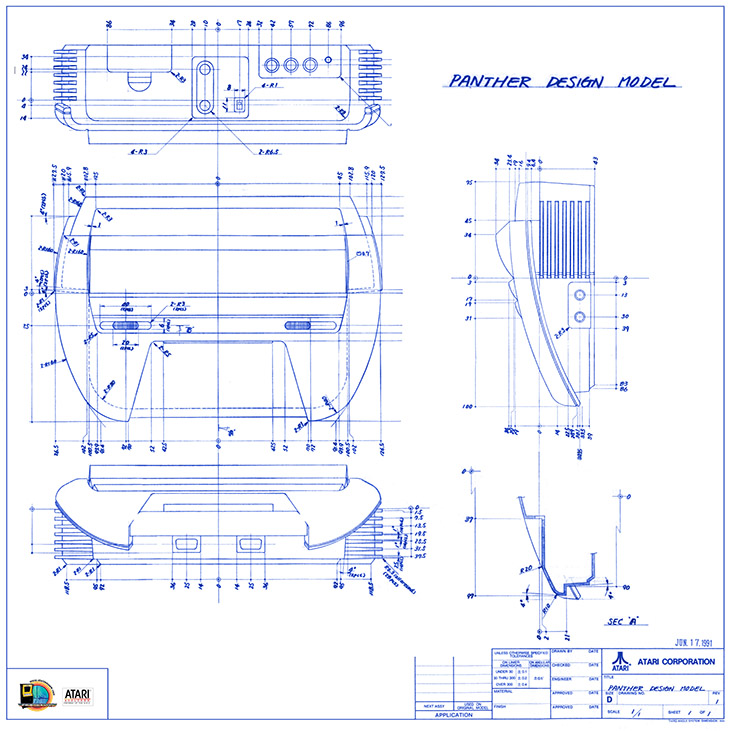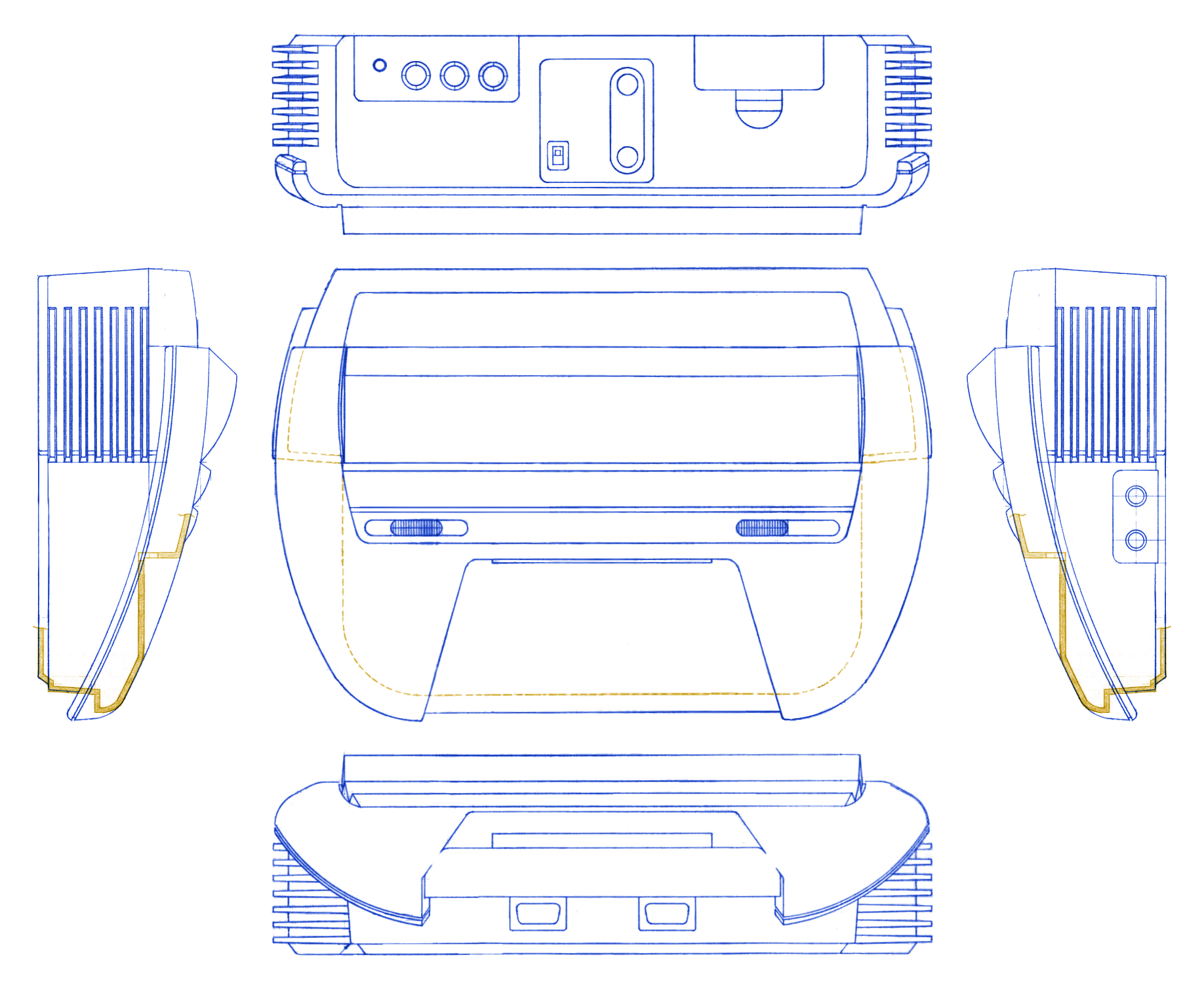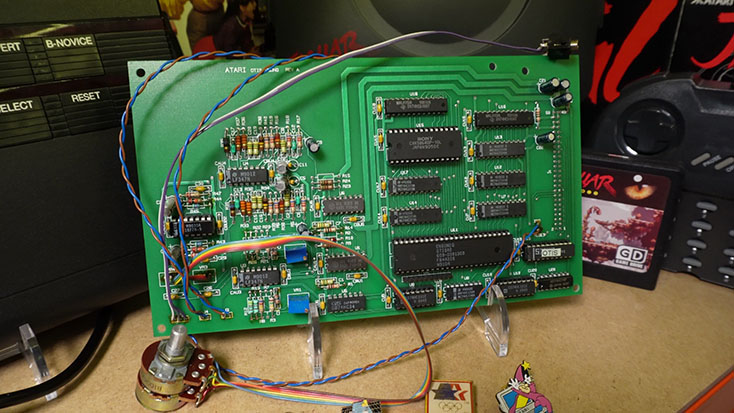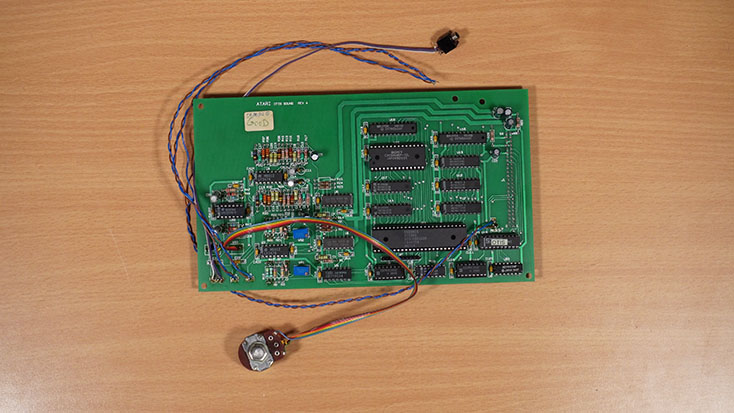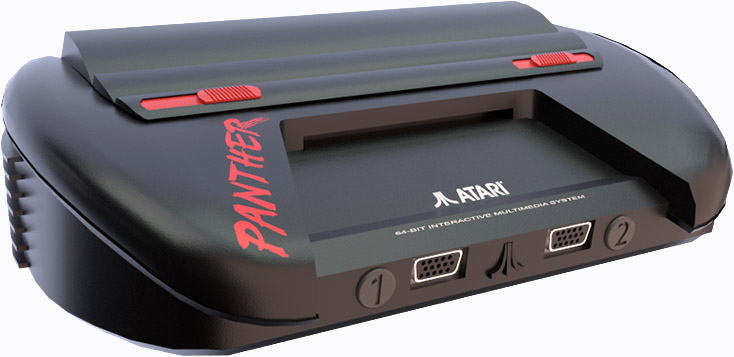
The Panther - Atari's Cancelled Console
Header Image: Panther 3D Render - author unknown - from Valentino Miazzo.
This page is a Work in Progress: first published February 8th, 2022 / last updated April 15th, 2023!
I’ve put this little page together because a lot has come to light since earlier news articles, videos, and even the Wikipedia page on the Panther were put together (note: it seems Wikipedia was updated in December 2022 to remove all of the old misinformation), and I’m hoping future researchers, journalists, YouTubers and even just interested parties can draw on it safe in the knowledge that it’s a trustworthy source of information. The aim is to have all available resources collected together in one place - citing and linking original sources where possible - as well as contemporary press coverage of the console’s development and demise, internal Atari documentation, and interviews with those who were involved at the time. All of this is cited in the relevant places and linked below.
I’d like to give an honourable mention to Ross Sillifant, who is a researcher for the excellent Games That Weren’t website and book and has been personally responsible for digging up much of the first hand information and interviews posted here, which were conducted in the course of research for the book. You may also know him as “Lost Dragon” or simply “LD” from various online forums. I have posted his research here with his blessing, as well as relevant snippets from our personal email exchanges where he cites firsthand sources.
On that note, despite the huge volume of research, the Panther ultimately wasn’t included in GTW as “there simply weren’t enough games far enough along to justify it’s inclusion”[1], which is interesting to bear in mind.
There isn’t a lot that’s truly new here - it’s all been spread about on various forums in fragmented fashion for years for anyone willing to look - but this is the first time it has all been collected together in one place.
The research on this page will eventually culminate in a video for my YouTube channel. If you use this page as a source for your own videos or articles I’d appreciate it if you gave me credit, as I have done with all of my original sources here. :)
So without further ado…
My Summary of Everything I’ve Found So Far
The Panther was to be Atari’s answer to the Sega Mega Drive / Genesis and Nintendo’s SNES, which it was originally targeted to release alongside for Christmas 1991[2]. A 16/32-bit machine utilising Motorola’s venerable 68000 CPU as per the Mega Drive, NEO GEO, Atari ST, and Amiga - but clocked at a much higher 16MHz.
It would also offer a custom 2D graphics “object processor” (or “OLP”) as part of its Panther chip. This was not based on the Transputer’s Blossom chip as has been reported[3] but actually shares its DNA with the Jaguar’s object processor[4]. In fact the object processor in the Jaguar - which handles 2D sprite-based graphics - is based on that of the Panther, with the Panther having “extra features”[5], implying that its hardware 2D capabilities at least may have been superior. Graphics were then drawn to screen using a chip known as the “GameShifter”[6].
The object processor was built from the ground up for 2D performance, with sophisticated sprite scaling implemented in hardware. As a result of this focus on 2D, its 3D performance was poor[7].
It appears that dedicated Panther ASICs were never produced - this Atari-designed custom chip was implemented on a Toshiba TC110G32 Gate Array in the development consoles[8].
The dev consoles only included 32K of onboard system RAM - described as “pathetic” by Hand Made Software’s Rob Nicholson in a 2018 interview[9] and “may have been an issue” by Attic Software’s Guido Hankel in 2016[10]. As this was the spec that was released to the press[11] it is probably safe to assume that this was the intended spec for the final production console.
The Panther’s architecture did allow up to 32K of additional RAM to be included inside a game cartridge should the game require more[12], and it appears that it would have been technically possible to add another 32K on the expansion port (had this port carried through to production units) for a theoretical maximum of 96K. The Panther also featured 8K of dedicated audio RAM[13].
Compare to the Mega Drive, which offered 64K of system RAM, 64K of dedicated video RAM and 8K of audio RAM onboard, or indeed the SNES with its onboard 128K of system RAM and 64K of video RAM, and it seems the Panther was comparatively poorly specced in this department. It appears that a major re-architecting would have been required to add more than the theoretical maximum of 96K stated above.
On a more positive note, the Panther’s unified architecture - with the CPU and all other components sitting on the same main 32-bit system bus - was less complex and potentially more efficient at accessing this RAM than other consoles of the time[14], so perhaps real world performance would have been better than expected despite this limitation.
Audio would be provided by a surprisingly sophisticated Ensoniq ES5505 (AKA “OTISR2”) sound chip[15] as used in Ensoniq’s samplers and synthesizers. This chip was also used in various Taito arcade games. As an interesting aside, the closely related derivative ES5506 “OTTO” was licensed to Gravis and became the basis of the GF1 chip used in their UltraSound soundcard.
The Panther was to be a front-loading (similar to the NES or a VCR) cartridge-based console utilising cartridges of up to 6MB capacity - an upper limit imposed by the Panther chip’s design[16]. Although speculated that the cartridges may use a card format similar to the TurboGrafx-16 / PC Engine, Atari’s Leonard Tramiel has stated that the cartridge format had not been finalised at the time of cancellation[17].
“The Panther development machine that was sent out to developers has a discreet black, oblong metal casing. It measures approximately 15 inches long by 12 deep by 5 inches high [381 x 305 x 127mm]. The front has an Atari logo/motif and features a reset button, headphone socket and volume control. To the rear of the unit there are audio outputs, video output, joystick ports and a parallel port for downloading data.”[18]
The “cartridge” in dev consoles consisted of 16x soldered SRAM chips for a total of 2MB, these could be reprogrammed from a connected PC or Atari ST/TT development system using the Panther’s expansion port[19] for rapid iteration of development code.
Atari’s full hardware specs for the Panther are available here. For those looking to dive even deeper into the architecture of the system, I can highly recommend the detailed technical analysis of the Panther’s hardware - based on the original schematics and source code - on Valentino Miazzo’s site.
Hardware Development
Early reporting speculated that the Panther would be based on the Atari ST[20], and although the possibility of an ST-based console similar in concept to Atari’s XE Game System was investigated[21], the Panther shares nothing in common with the ST other than the 68000 CPU. Further, Jim Gregory of Hand Made Software confirmed in a 2016 interview that the Panther wasn’t based on the Lynx[22], which had also previously been erroneously reported[23].
In fact, the console was developed from the ground up in-house at Atari, bringing onboard external contractor Martin Brennan[24] when the project was already underway[25]. Brennan was a founding member of Flare Technology, a group of ex-Sinclair engineers who had previously worked on the cancelled Konix Multisystem and Flare One, and an ex-colleague of Richard Miller, Atari Sunnyvale’s director. Brennan was joined by fellow ex-Flare founder John Mathieson, and the duo were known as “Flare II”, as referenced in some internal technical documents[26].
The same team developed the Jaguar, with a large overlap between the two projects with regards to timescales and engineers[27][28]. Leonard Tramiel has stated that, once the Jaguar was underway, the Panther was considered a “backup project in case the Jaguar didn’t work”[29][30] - perhaps influenced by Brennan’s insistence that 3D was the future of gaming[31].
Little is known about the Panther’s operating system other than the fact that it was being written by in-house Atari developer Joel Sieder[32].
Graphics Shortcomings
Llamasoft’s Jeff Minter stated in a 2003 interview that the Panther hardware was superior to the Mega Drive and SNES[33]. That said, its graphics implementation would later be described by Atari Corp. developer D. Scott Williamson as “lame” and a “big mistake” - particularly in comparison to the Lynx - due to it being a “display list platform with just a single scan line video buffer more like a 400/800/7800”[34].
Minter has stated on Twitter that while the chip had sprite scaling capabilities, it didn’t support hardware rotation[35][36] - a feature which was offered by the SNES. He has also previously mentioned running into issues with screen tearing when trying to display too many sprites on screen[38], as has Rob Nicholson of Hand Made Software[39], which he attributed to the same outdated “display list” design.
Software Development Environment
Development software running on both MS-DOS and the Atari ST[40] has surfaced online, with D. Scott Williamson uploading his own ST-based personal development environment[41]. Leonard Tramiel has also stated that he personally coded a utility on the ST to aid in the generation of Panther game graphics code[42], with the Panther being cancelled before this could be released to developers[43].
German developer Guido Henkel of Attic Software stated in a 2016 interview that he was sent a development kit[44] that included “a Panther prototype, an Atari TT workstation and the developer manual”. The TT030 was backward compatible with the ST and was later used as the development environment for the Jaguar (using a tethered cartridge as the Jaguar development units were closer to production hardware and lacked the “cartridge emulator” as featured in the Panther).
Status of Games / Demos
Llamasoft’s Jeff Minter had some tech demos up and running on the machine[45][46][47], as did Hand Made Software[48] (claimed to include their ST port of Elite)[49], although there doesn’t seem to be any surviving footage or code from these projects other than a few static images of Minter’s “Antelope Demo” and “Prioritize Test 1” featured in a 1991 article by “The One” Magazine, and again the “Antelope Demo” and “GAL Map Functionality Test” featured in the July 1991 edition of “Games-X” Magazine, which also included a description[50] of what the demos looked like in action.
Minter mentioned on Twitter in October 2022 that “…all the graphics for that demo were just blagged out of the data disks for whatever version of Deluxe Paint was current at the time”[51], with user AnDraw replying “my god, you’re right” and attaching an example image with side-by-side comparisons[52].
It has been reported that Minter was working on a sequel to Star Raiders on the Panther, however he stated in a 2003 interview with Edge Magazine[53] that he was “intending to do a space game with some Star Raider-y aspects” as well as “scrolly shooty sections” and “some strategic aspect”, implying both that the game was not intended as a direct sequel and that it hadn’t progressed past the concept stage. He has also stated that if he were to have developed a sequel to Star Raiders he would have liked to have incorporated VR, and that it would have to have been an “homage” and “highly non-commercial”[54].
Games-X magazine were shown[55] a “partially written game…in the Defender mould”, which they praised for its smoothness, number of on-screen colours and sprite scaling. This appears to be a tech demo / test rather than the beginnings of a future commercial release.
Minter’s Antelope Demo has in the past been misattributed as Antelope Attack, with claims that it included interactive gameplay elements. Minter has dismissed these claims, as well as a previously rumoured connection to his Falcon030 game Llamazap[56]. The Games-X article also appears to confirm that the Antelope Demo was indeed a non-interactive demo[57].
Guido Henkel of Attic Software, best known for his work on Planescape: Torment and Realms of Arkania, confirmed in a 2016 interview[58] that he had an RPG in development for the system codenamed The Crypt, which he’d originally started on the Konix Multisystem. The development team consisted of himself and one artist. He states that an animated title screen and the first level were “complete” but that that he no longer has any source code.
It has also been confirmed that Psygnosis were actively developing a version of Shadow of the Beast[59] on the Panther, however no code or footage survives and therefore progress is unknown.
Tiertex’s Strider II had been greenlit for the console[60][61], however there is no evidence that development progressed past this stage.
There are also rumours from credible sources of a playable pong demo dubbed Panther Pong or Plasma Pong developed in-house at Atari. It has been speculated that this may have inspired the “Plasma Pong” Easter Egg in Llamasoft’s Defender 2000 for the Atari Jaguar.[citation needed]
Persistent rumours that Cybermorph, Trevor McFur, Raiden, and various other Jaguar games “started life” on the Panther have been disproven by multiple credible sources[62][63][64] both inside Atari and externally. The same sources have also squashed the rumours that Pit Fighter, The Humans / Dino Dudes, Daemonsgate, and Steel Talons were ever actually in development for the system[65][66][67][68][69], with Imagitec’s Lee Garnett stating[70] that “Daemonsgate was entirely written in assembler (IIRC) so it wouldn’t have been [a] trivial task to port it to other platforms”.
It would appear that these rumours originated from bold claims made by Martin Hooley of Imagitec Design and Jim Gregory of Hand Made Software, despite numerous conflicting reports from Atari sources and even their own employees[71][72]. Being charitable, it is possible that at least some of these titles may have been discussed at a high level, but there is no actual evidence of development having started or indeed developers at these companies even being aware of them.
Mev Dinc of Vivid Image was offered the opportunity to develop for the Panther, but turned it down[73].
It’s interesting to note that Atari’s then-CTO Leonard Tramiel, who was personally involved with the console’s development, has stated that “I have no idea why there are people that say they played a game on a Panther. Perhaps it is an example of the Mandela Effect.”[74], implying that there was no actual playable code developed.
Controllers
The controllers were based on a variant of Atari’s “Power Pad” - originally sold in incredibly limited numbers for the STE and Falcon030 due to nonexistent game support - with minor hardware tweaks and a black and red colour scheme. The pad used the same 15-pin Atari Enhanced Joystick Port connector across systems and was intended from its inception to be multi-platform[citation needed] like the iconic CX-40 joystick before it. The Panther prototypes include these connectors. The black and red variant of this controller is most famously known as the Jag Pad due to it being bundled with the Jaguar.
Serious Hardware Bugs & Cancellation
The Panther was cancelled due to “technical difficulties”[75] - with this decision being taken high up at Atari rather than by their partners at Flare II[76][77] as has been previously reported. Leonard Tramiel has gone so far as to state that the console “never worked”, citing “noisy static” on the graphics output relating to “a flaw in the heart of the system that would take a lot of time and effort to get working”[78][79].
Jim Gregory of Hand Made Software described a serious bug related to “divide-by-zero problems” in a 2016 interview[80]. Hand Made sent a bug report to Atari along with sample code which would reliably crash the system, which was “first met with disbelief and then annoyance as if WE had caused it to fail”. He goes on to state that at least one other developer reported the same fault.
Inside Atari, it was hoped[81] that one of the third-party game developers would find a software workaround for this issue, saving them the time and expense of fixing it in hardware - however, it seems this was not to be.
In the same interview, Gregory states that the cancellation of the Panther “cost [Atari] a LOT of money and credibility with their owner, Time Warner (who later shut the company down suddenly)”, implying that Atari’s mishandling of the Panther project and resulting hit to crediblility with third party developers was at least in part responsible for the demise of the company in 1996.
Leonard Tramiel and Martin Brennan’s previously-stated belief that the Panther was considered a “backup project in case the Jaguar didn’t work”[82][83][84] would certainly explain why it was abandoned so easily instead of reworking the Gate Array-based Panther chip to fix the flaw.
It’s perhaps relevant to note that Guido Henkel of Attic Software described the Mega Drive and SNES as “getting a bit long in the tooth already”, going on to describe Atari’s decision to cancel the Panther and pool their limited resources into the Jaguar as “smart” as “for a while [the Jaguar] really had the superior hardware to anyone else”.[85]
For another angle, Joel Seider, senior programmer at Atari Corp during this time had this to say in a recent interview[86]: “I recall the hardware capability being average, but probably not anywhere near good enough to make a splash. The Super Famicom had already been released in Asia and my recollection was that the Panther hardware was really not that much better. At the time, there were also a lot of rumors of 3D hardware coming out in a few years from a number of different companies (including Atari).”
After the Panther was cancelled, its case was considered for use in a cost reduced 7800[87] (similar in concept to the 2600jr), and Atari was approached by at least one company looking to license the Panther’s hardware and continue development[88], as had happened with the Konix MultiSystem, but neither plan came to fruition.
What’s in a name?
Brennan stated in a 2017 interview that he named the console after his car - a Panther Kallista, as the project was unnamed when he was brought onboard[89]. It seems that this was readily accepted, perhaps because it fit with Atari’s then-current “big cat” naming scheme (See Also: Lynx, Jaguar).
Technical Drawings of Final Case Design from Atari Museum
The infamous Atari historian Curt Vendel is sadly no longer with us, and his website atarimuseum.com went offline some time around August 2021. I have mirrored the following Panther technical drawings from his site to preserve them here:
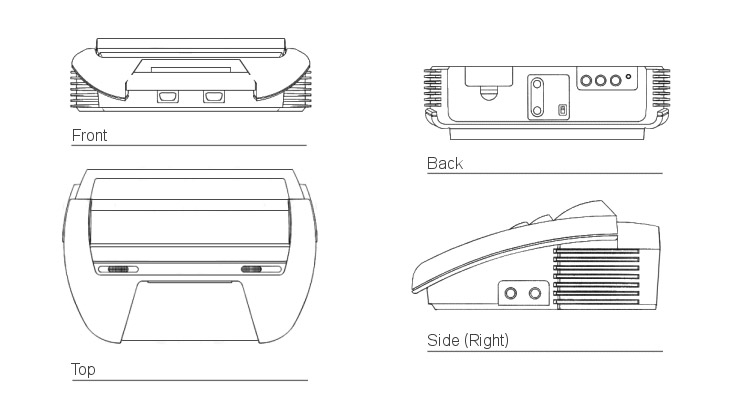
[No larger size available - local mirror 1 / local mirror 2]
I believe that these are just cleaned up versions of the Atari technical drawing below. All of the 3D renders and sketches found online seem to be based on these drawings - as far as I know Atari never produced any 3D renders themselves.
Imaged and uploaded by Curt Vendel to the now-defunct atarimuseum.com.
Reproduced here in the name of historical interest and preservation.
Technical Drawing from Atari-Explorer
Click to embiggen:
Sourced from the now-defunct atari-explorer.com.
Reproduced here in the name of historical interest and preservation.
Cleaned Up Technical Drawing From 4chan
Click to embiggen:
Sourced from archived 4chan thread about Panther 3D renders.
Reproduced here in the name of historical interest and preservation.
Panther Prototype OTIS Sound Module
I acquired this prototype OTIS sound module from The Brewing Academy in February 2022 - it’s the one featured in my preliminary video.
Dr. Marlin Bates of The Brewing Academy had this to say when queried: “I got them from someone who was allowed to just go out and empty desks/cabinets when Atari closed down. These were sitting in a box in his warehouse for 30+ years when I asked if I could see if they would sell. We have about 12 or so left. Once they are gone, there are no more.”
As I have a good working relationship with him I didn’t want to pry any further. :)
It’s labeled “ATARI OTIS SOUND REV A” and features a “SAMPLE GOOD” sticker.
Click images to embiggen.
It’s based around an Ensoniq ES5505 “OTISR2” sound chip as used in the EPS16+ sampler and their VFX line of synthesizers - a high end chip for its day. This chip was also used in many Taito arcade games. The ES5505’s closely related successor, the 5506 “OTTO”, was licensed to Gravis and would be the basis of the GF1 chip used in the Gravis UltraSound.
The ES5505 is a wavetable chip, although as the sound module only features a paltry 8k of SRAM (compare to the 256k in base models of the UltraSound), it seems samples were intended to be streamed from the CPU / system RAM.
Bob Yannes co-founded Ensoniq and also designed this chip’s predecessor - the 5503. His involvement in the OTISR2 is unknown at this time, but he is perhaps most famous for designing the SID chip as used in the Commodore 64. The 5503 was used in the Apple IIgs - so it seems the Commodore 64, Apple IIgs, Panther and Gravis UltraSound all share a common audio heritage[90].
The module measures 222 x 127mm, and has a 4mm mounting hole in each corner (for a total of 4). The trailing wires are as follows:
- Stereo potentiometer - appears to have been mounted in the front of the dev units.
- Stereo 3.5mm socket - appears to have been mounted in the front of the dev units.
- “IRQ / RESET” cable (2 pin) - appears to be connected to the motherboard close to the CPU.
- “J3” and “J4” cables (2 pin) - appear to be for L/R audio outputs on the back of the dev units.
(Observations based on this image from homecomputer.de)
On the back is a bodge wire, 2 resistors, and an arrow indicating a PCB trace that has been cut.
Atari-Forum member czietz has also investigated one of these and come to the conclusion that it matches an Atari schematic from January 15th 1991.
Sources / Further Reading
Below is a collection of magazine articles, interviews, and internal Atari documentation covering the console that I have managed to scrape together from various sources online. I’ve tried to present it in chronological order to the best of my ability.
I’ve put together a preliminary video with some of my findings so far, stating my intent with the project and putting out a call for further information from the Atari community:
Watch on YouTube: https://www.youtube.com/watch?v=jmr30K2w1ZM
Official Documents & Software Downloads
- Atari Entertainment News Release - Panther Technical Specifications - 1991
- Panther Software & Schematics Downloads From Atari Museum - Jan 1991
- Panther Development Environment Download From D. Scott Williamson - Mar 1991
- Panther - Display Sub-Sytem Specification - Internal Technical Document - Mar 1991
- Atari Interoffice Memo - Fax No. ST91-53 - May 1991
- More Atari Panther Schematics Discovered - Jan 2022
Press
- “On Safari” - Interview With Bob Gleadow, UK boss of Atari - ACE Magazine - May 1990
- “Atari Set To Roar With New “Panther” 16-Bit Machine” - EGM - Feb 1991
- “Secret Specs Of Atari’s 16-Bit Panther” - Game Player’s Magazine - Early 1991
- Excerpt From “Cutting Edge - Hardware Hot out of the Desert” - GamePro - April 1991
- “Atari Console: Panther To Go” - New Computer Express - June 1991
- “Atari Locks Panther Away” - The One - July 1991
- “Atari Panther Revealed” - Games-X Magazine - 18th-24th July 1991
- “The Extinct Panther” - The One - August 1991
- Excerpt From “Cutting Edge - The Jaguar Rules Atari’s Jungle” - GamePro - Jan 1992
- Excerpt From Interview - Jeff Minter - Llamasoft - Edge - Feb 2003
- Excerpt From Interview - Peter Johnson - Ocean Software - Codetapper - May 2011
- Excerpt From Interview - Martin Brennan - Flare - konixmultisystem.co.uk - October 2017
Forum Posts & Misc.
- Roundup Of Misc. Forum Posts etc.
- Jim Gregory Interview - Ross Sillifant - 2016
- Guido Henkel’s LOST Atari Panther RPG: “The Crypt” Interview - Lost Dragon - Jul 2016
- Quote: Rob Nicholson, Software Development Manager, Hand Made Software - Jul 2018
- Quote: Jeff Minter, Llamasoft - Jul 2018
- Leonard Tramiel Facebook Posts - 2018 / 2019 approx.
- My Ongoing Personal Email Exchange With Ross Sillifant - March 2022
Pictures
“On Safari” - Interview With Bob Gleadow, UK boss of Atari
May 1990 - Advanced Computer Entertainment (ACE) - Issue 32
First in a new series of up-to- the-minute ACE interviews, Rik Haynes talks to Bob Gleadow, the UK boss of Atari…
FORGET CD, SAYS ATARI BOSS BOB GLEADOW, WE’RE TALKING PANTHERS AND LYNXES…
Bob Gleadow, Atari UK supremo, Keeps mum about Atari CD products.
Is the ST console still a goer?
The ST console is known as project Panther, it will be circa £150. keyboard-less, with a 68000 at 16MHz and advanced graphics - better than an STE’s graphics. Its storage medium will be either ROM or disk depending on how we finally configure it. The problem with Panther is simply that of resource allocation, Panther development has been continuing as a secondary priority to the Lynx. Software houses will get their Panther systems later this year. The timing of it will mean that we won’t have hardware and software for this Christmas. From a marketing stand-point we want to give the Lynx a clear field this year.
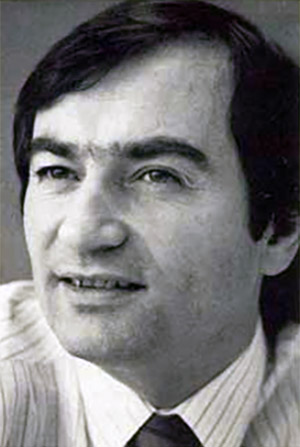
With the current emphasis towards home user CD-ROM devices from Japanese compa- nies like Fujitsu and NEC plus Commodore with a CLVtOM version of the Amiga, do you see Atari following suit?
Cast your mind back. MSX ran CD-ROM, had some great CD-ROM and laser disc software, but didn’t happen; then CD-ROM’s were relatively expensive and I believe that adding a CD-ROM today in end user terms must add £15O-£2O0 to the retail price. Is it therefore viable yet? If the market says yes we’ll also have one, we don’t believe it is ready to say yes - yet! When the market is ready, we have a product which we’ve had for two years now but has no software to go with it.
What’s the future of CD-ROM technology then?
I see a major opportunity for CD-ROM in intuitive learning programs. As for games, you can get hundreds of today’s games on a single compact disc. I’m not sure that the price of the hardware isn’t going to prevent that from happening in the next two years. CD technology itself is advancing quite quickly, eventually you’ll get very fast and graphically great games of TV quality. But that will actually only take us back to where MSX was with the laser disc back in 1984.
I think the Sony/Philips CDI system is a step in the right direction but it’s still expensive and comes within my three year plan for when CD’s become a built-in feature. The built-in CD of three years time will obviously be a CDI system, and by then there should be a whole wad of software available which makes it worthwhile - it still won’t be cheap though.
When will the Lynx be launched in the UK?
The Lynx will sell in the UK for £179.99, the £149.99 price could be available but that’s without the built-in game and power supply. As a consumer I’m always aggravated when I get home and find a product hasn’t got the batteries or plug needed to operate it. So we’re going at £179.99. and that includes California Games cart, power supply and a cable that allows you to link to another Lynx. It will be available in April through Dixons and other stores.
There are seven titles available now, with at least another 23 games due over the next 12 months. The next three will be Rampage, Gauntlet III and Chips Challenge. Obviously the recent tie-up with Tengen is important. The Lynx connectivity factor is the key to success. You have a new concept in portability, we’ll sell more than a million Lynx’s this year without a doubt. I see no reason why it’s a market that should be any less than that of the Walkman.
Software writers are very enthusiastic about the concept and the technical abilities of the machine. We offer a Lynx development kit, but at the moment we can’t produce these kits fast enough. We’re hoping to organise a UK developers conference in April which will embody the Lynx, Portfolio, STE and the 7800 games console.
“Three years ago Atari was on its knees.” - Bob Gleadow, Atari UK boss
Are there going to be any future enhancements to the Lynx?
We’re developing an infrared connector which will allow you to link up the Lynx without the use of a wire, There’s also potential for a full TV tuner. Enhanced models of the Lynx are currently on the drawing board, but their release is at least two years away.
Do you feel worried about NEC’s colour portable PC Engine?
At the moment I feel no willingness to react to what really is a rumour.
Is Atari announcing any new products this year?
No, we’re busy fulfilling our existing product plans for the Lynx, STE and TT.
Do you ever envisage a £199 ST?
No, most of the cost reductions with computer manufacturing have been achieved in the semiconductor area, the electromechanical parts such as the power supply, keyboard and disk drive represent a larger proportion of the cost of the machine. This means that dramatic cost reductions are unlikely. In the future, semiconductor content will rise for the same cost, so you’ll get more RAM, advanced processors and blitter chips - all within the £299 price-point.
How do you view the timeless ST vs Amiga debate?
With some amusement, because I recognise that both machines have their strengths and weaknesses - the reason this is likely to be a long debate is that there is truth in both arguments.
HOLDING OUR BREATH
Commodore are developing a CD-ROM console based on Amiga technology. Are Atari going to follow suit?
At the moment, the answer seems to be no. But we can reveal that, at the time ot going to press, Atari were planning to make an announcement to software developers regarding a new product later this month. Will it be a CD-ROM unit?
Here at ACE we reckon that if Atari are going to maintain a foothold in new technology a CD-ROM machine is essential. This is because CD technology takes a long time tor software developers to get to grips with. To develop titles using the new systems will require at leasl twelve months - and Philips CDI, which is likely to start the ball rolling in earnest - is now exactly one year away from release, with titles currently being commissioned by Philips for publication next yeai. No-one wants to rush into new markets, but this is one time when fortune will favour the brave.
Non-disclosure agreements allowing, we’ll let you know next month what Atari have to say tor themselves at the conference.
Text taken from the May 1990 Issue of Advanced Computer Entertainment as posted to archived ASSEMBLERGames forum thread by user LD (local mirror).
Reproduced here in the name of historical interest and preservation.
Atari Entertainment News Release - Panther Technical Specifications
Date Unknown (Late 1990 - Early 1991?)
ATARI ENTERTAINMENT - NEWS RELEASE
FROM:
TO: STÉPHANE LAVOISARD
Dear Stéphane, please find the Panther Features for your magazine… Thank you not to reveal my name in your editorial about it.
Processor:
16 Mhz 68000, 1.4 Mips
Memory:
32 Kbytes fast static-Ram
64 Kbytes Rom on board
8 Kbytes sound Ram
Cartridge:
Up to 6 Megabytes (48 Mbits)
Video:
320*200 pixels (programmable) non-interlaced
32 colors/line
7860 colors/screen
Palette of 262144 colors
RF, RGB and S-Vhs outputs
Genlock option
Sound:
8 Mips, 29 bit digital signal processor
16 bit stereo PCM sound
25 voices each with independent volume, envelope, 4 pole digital filter, frequency control and pan.
8 Kbytes PCM Ram
Twin stereo headphone sockets
Graphics:
32 Mhz, 32 bit, object oriented graphics processor
About 2000 sprites can be displayed (and manipulated) simultaneously
Object processor provides hardware scrolling (zoom & shrink) horizontally and vertically, DMA
Run length-decoding in hardware
Fast hardware addition, for object manipulation
Pixel programmable interrupt
Joystick:
Two, multi-function joystick ports
X, Y controller, 3 fire button, 2 key joystick as standard
Options: Paddles, lightgun, infra-red remote control, CD-Rom, Modem, Genlock, Comlynx interface
1196 Borregas Avenue - Post Office Box 3427 - Sunnyvale, California 94088-3427 - (408) 745-2000 - FAX (408) 745-2088
Scan of news release found on the now-defunct Atari-Explorer website (local mirror).
Reproduced here in the name of historical interest and preservation.
Panther Software & Schematics Downloads From Atari Museum
January 1991, Uploaded October 2017
The infamous Atari historian Curt Vendel is sadly no longer with us, and his website atarimuseum.com went offline some time around August 2020. I have mirrored the following Panther downloads to preserve them here:
Netlists, PLAs and PALs
Panther HW Documents Flare II
Production Schematics
Development Schematics
Dev Sources
Dev Sources PC
It seems these can be dated up to and around January 1991 based on file creation dates.
Imaged and uploaded by Curt Vendel to the now-defunct atarimuseum.com.
Reproduced here in the name of historical interest and preservation.
Panther Development Environment (Atari ST) Download From D. Scott Williamson
March 1991, Uploaded November 2011
D. Scott Williamson was a developer at Atari Corp and is active on the AtariAge forums under the name solidcorp. Looking at the files, they date from 1989-1991, with 6th March 1991 being the most recent.
solidcorp: “The attached PANTHER folder was on my ST C: boot disk drive.
Most of it is a standard 68k ST development environment.
Of particular interest are the header files PAN.H and SPECIAL.H which are dated 1/10/1991 and 12/9/1990 respectively.”
Atari Panther Development Environment (Atari ST)
Uploaded by AtariAge user solidcorp - AKA Atari Corp. developer D. Scott Williamson in this forum post.
Reproduced here in the name of historical interest and preservation.
“Atari Set To Roar With New “Panther” 16-Bit Machine”
February 1991 - EGM (Electronic Gaming Monthly) - Issue 19
ELECTRONIC GAMING EXPRESS
Leading up to the January Consumer Electronics Show in Las Vegas, there appears to be more than enough activity stirring about in the area of new video game systems and consoles. Sega will be introducing their mid-range Game Gear hand-held with a library of titles that is rumored to include over twenty different games. While at the same time Nintendo is arming themselves with what could prove to be the destroyer of all competing 16 bit hardware, the SFX for a planned fall release.
Into this fray comes an unexpected player in the 16-Bit sweepstakes. A company that possesses the technical ability to create a system capable of taking n super-guns Nintendo and Sega. While the fact that Atari Corporation, who currently markets the most technologically advanced hand-held in the form of the Lynx, is planning a major push into the 16-Bit console area may surprise some, the hardware that they’ve engineered will surprise even more.
Code-named “Panther” (apparently keeping in lines with Atari naming all their products after the feline family), the 16- Bit super system that the wizards at Atari have come up with is, by all accounts, a quite superior piece of gaming technology. With a main processor that’s rumored to run at an astounding 16 Mhz (compared to the 8 Mhz of the Sega Genesis and the 12 Mhz of the home arcade machine - Neo Geo and the rumored 14 Mhz of the Nintendo Super Famicom) and the built-in brains to scale images (a truly powerful ability used quite effectively in the Lynx), the Panther may just surprise everyone and find a home in the hearts of the game playing public.
Those who have seen the technical specifications of the machine are unanimous in their praise for a system that they place somewhere between the Sega Genesis and the Nintendo Super Famicom. “The Panther’s ability to project and scale images is a vast improvement over the Sega Genesis,” one leading developer who is considering Panther work told EGM, “but other factors, specifically the system’s audio capability, prevent it from eclipsing the Super Famicom.”

But, as has been said before in the pages of EGM, the true value of a system is based on the softs it can project, and how good a job it does in projecting them on the screen. Here, the Panther is in a comer with both the Super Famicom and Sega Genesis coming from both sides.
One skeptic of Atari’s new foray into the high-end console market, who is also considering development for the system, sights this competition as the Panther’s death blow, “With Nintendo locking in most of the major game developers, and Sega lapping up those who don’t agree with Nintendo’s policies, there’s not much more in the way of attractive licenses left for another system. This is a problem that the TurboGrafx-16 has exper-ienced since its inception. Atari needs to concentrate on developing some blockbuster A+ titles for the Panther at the start, or the machine won’t ever get the footing it needs to make the big impact that the specifications say it can make.”
Whatever the outcome of the many software licensing deals is, there’s no denying the fact that the Panther could become the predominant entry into the American market by offering U.S. manufacturers and developers the chance to stake a real claim, with a real machine, on the video game world.
Text taken from the February 1991 Issue of Electronic Gaming Monthly, as originally found on this forum post on AtariAge by Parallax Scroll (local mirror).
Reproduced here in the name of historical interest and preservation.
Secret Specs Of Atari’s 16-Bit Panther
Early 1991 - Game Player’s Magazine
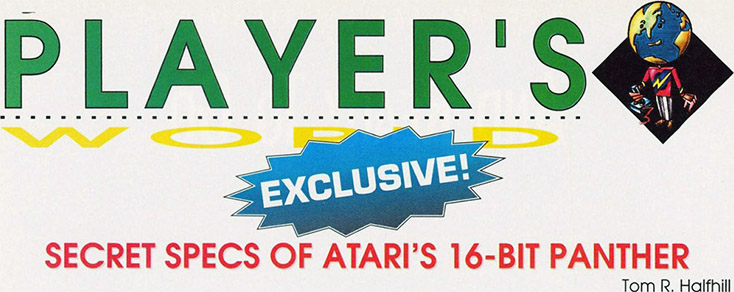
PLAYER’S WORLD EXCLUSIVE!
Tom R. Halfhill
For months, industry scuttlebutt has indicated that Atari Corp. is working on a new 16-bit home videogame system that would hit the market sometime late this year or early in 1992. Actually, Atari first began planning a 16-bit game system as far back as 1986, but the project was delayed because of an internal conflict between two design teams. One team supposedly favored a system based on the Atari ST personal computer, while the other wanted to develop an entirely new game machine from scratch.
Apparently that conflict was resolved within the past year, because Atari is now finishing work on a new machine that’s codenamed “Panther.” It’s rumored to be extremely powerful, but no one has managed to uncover its technical specifications - until now.
Game Player’s recently learned some vital details about the Panther from reliable sources. This information suggests that the Panther may be the most powerful home videogame system yet.
The Panther’s most impressive features are its huge color palette and very fast computer chip. Sources say the Panther can display more than 256,000 different colors - about eight times as many as Nintendo’s 16-bit Super NES (Super Famicom) and four times as many as SNK’s Neo-Geo! Like other game systems, however, the Panther normally can’t display all of its colors on the screen at the same time. But most screen modes are said to be capable of handling at least 256 colors simultaneously. The Panther’s “standard” screen mode is said to have a resolution of about 320 x 200 pixels, comparable to the most common screen modes of other 16-bit home game systems.
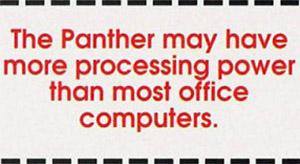
Inside the Panther, sources say, is a Motorola 68000 microprocessor chip similar to those used in the Neo-Geo and Sega Genesis. But the 68000 chip in the Panther is said to be twice as fast, operating at a clock speed of 16 megahertz. By comparison, most Apple Macintosh computers are powered by 8-megahertz 68000 chips; only the more costly Macintosh II models have faster microprocessors. That means the Panther would have more raw processing power than most office computers!
In addition to the 68000 chip, the Panther also has custom chips for graphics. These chips include a feature known as hardware scaling, which means that game designers can make objects appear to zoom larger or smaller on the screen. Although scaling can be accomplished in other ways without this feature, it’s generally faster and smoother when included as a builtin function. Atari’s hand-held Lynx has hardware scaling, as does Nintendo’s Super NES. However, sources say the Panther’s graphics chips do not have a similar function known as hardware rotation, which would allow screen objects to be easily rotated. So far, the Super NES is the only home game system with built-in rotation.
For sound effects and music, sources say the Panther has a stereo synthesizer chip with 32 sound channels, digital filtering, and digital sampling at a frequency of 20 kilohertz. The high sampling frequency (four times the rate of the Sega Genesis) means the Panther could reproduce sounds with superior fidelity.
When will the Panther be available? Sources say it should be ready by this fall, and that prototypes are already in the hands of a few game developers. The price is expected to be comparable to that of competing 16-bit home game systems - under $200.
Text taken from an early 1991 Issue of Player’s World (exact publication date unknown), as originally found on this forum post on AtariAge by Parallax Scroll (local mirror).
Reproduced here in the name of historical interest and preservation.
Panther - Display Sub-Sytem Specification - March 6, 1991 (Internal Technical Document)
March 5th 1991
Clint Thompson: “Leonard [Tramiel] was kind enough to scan this in and share it via TXG/MNX - figure I would add it here as well since a lot of people aren’t in the FB groups. GPU specs and Leonard makes it very clear that the Blossom video chip from the ATW800 has absolutely nothing to do with the Panther.”
Scan of internal technical document posted to AtariAge forum by Clint Thompson (local mirror).
Reproduced here in the name of historical interest and preservation.
Excerpt From “Cutting Edge - Hardware Hot out of the Desert”
April 1991 - “GamePro” Magazine Issue 21
Hardware Hot Out of the Desert
By the Mild Mannered Reporter
CE at CES
There was plenty of Cutting Edge action at the 1991 Winter Consurner Electronics Show. By now much of it may have filtered through to you, but here’s a recap of the things that pushed our turbo buttons.
A Bit About 16-Bits
The big non-news at the show was the 16-bit Nintendo Super Famicom. The Big N had a snazzy showroom and demo set up and the unit and its games looked as good as you’ve seen in GamePro (see Overseas Prospects this issue). Nice show, but all Nintendo would say is that the American version is due to arrive here in September… or October… probablv.
Rumors about Atari’s 16-bit machine, codename: Panther, were also buzzing about the video jungle. But like the Loch Ness Monster, Bigfoot, and other mysterious beasts, few people have actually seen a Panther. Nice tidbits include the fact that the unit will run at 16 MHz compared to Sega Genesis’ 8 Mhz and the reported 12 Mhz of the Super Famicom, that it will play Lynx games, and that the unit’s debut will coincide with Nintendo’s 16-bit unit in September… or October… probably (see the above paragraph).
Expect all 16-bit rumors to get real by the Summer Consumer Electronics Show in June.
[The article goes on to discuss the Game Gear and Atari Lynx 2]
Text from page 14 of “GamePro” magazine, issue 21, originally published April 1991. Scan of this page is available online from this forum post on AtariAge by Parallax Scroll (local mirror).
Reproduced here in the name of historical interest and preservation.
Atari Interoffice Memo - Fax No. ST91-53
May 16th 1991
ATARI - INTEROFFICE MEMO
Da: May 16, 1991
Fax No: ST91-53
To: Leonard Tramiel - Atari Sunnyvale
Richard Miller - Atari Sunnyvale
Larry Siegel - Atari Chicago
Craig Erickson - Atari Chicago
Fr: Sam Tramiel
Page 1 of 1
This is to confirm the final, final decision that the Panther project is cancelled.
Long live the Jaguar!
Please, if anyone asks, we cancelled due to technical difficulties. Thanks.
Regards,
Sam Tramiel
ST
ATARI CORPORATION
1196 Borregas Avenue - Post Office Box 3427 - Sunnyvale, California 94088-3427 - (408) 745-2000
Scan of internal memo posted to archived ASSEMBLERGames forum thread by user LD (local mirror).
Reproduced here in the name of historical interest and preservation.
“Atari Console: Panther To Go”
June 1991 - New Computer Express
In a sudden change of direction Atari has abandoned it’s 32-bit Panther Console in favour of a revolutionary, 64-bit RISC-based games machine - a design that the company feels sure will be “the technology leader into the 21st Century”.
While details of the new console, codenamed the Jaguar, are a closely-guarded secret, according to insiders the Reduced Instruction Set Computer technology involved could allow the Jaguar to run Virtual Reality games.
The announcement comes a few weeks after Atari UK’s Managing Director Bob Gleadow stated that the Panther hardware was complete. At a major press conference held last month, Gleadow implied that a pre-Christmas launch for the Panther was likely - the final date would only be governed by the availability of game titles, he said.
Now all development work on Panther software has been called to a halt by Atari USA’s President of Software Development, Larry Segal.
In a letter to the software houses that had Panther development systems, Segal explained that Atari would “forego” the Panther console in favour of “a spectacular game system that we feel will be capable of being the technology leader into the 21st Century”.
At least six UK software houses were working on Panther software, but it seems none of them had actually completed a game when the decision to scrap the project came - less than six months before the scheduled International launch.
Segal is keen to maintain their support for the Jaguar: “Those of you who have placed time and energy behind the Panther will be compensated for your support,” he wrote, “we have no intention of causing you financial distress… we will give you every opportunity to adopt your development schedules to this new system.”
Apparently, Atari was developing the Panther and Jaguar consoles in parallel, but the Jaguar suddenly began to overtake it’s stable-mate. According to Craig Erickson, Vice President of Software Development for Atari USA, Panther had reached the stage at which the casing was ready to go into production, the hardware was ready to go into production and the hardware engineering was complete.
Erickson explained: “The Jaguar was progressing faster than we anticipated and we asked ourselves why were we putting Panther out instead of Jaguar? “At that point we decided to drop Panther and push all our resources behind Jaguar”.
While a few Jaguar development systems are believed to be in the hands of major USA companies, the Jaguar console is unlikely to be publicly unveiled this year, according to an Atari spokesman.
Text taken from the June 1991 Issue of New Computer Express, as originally found on the now-defunct Atari-Explorer website.
Reproduced here in the name of historical interest and preservation.
“Atari Locks Panther Away”
July 1991 - “The One” Magazine Issue 34
ATARI HAS DRAMATICALLY SCRAPPED all work on its eagerly-awaited Panther console.
The move seems to have taken the company’s UK office by surprise though: just a week before the announcement was made in the US, UK managing director Bob Gleadow and marketing manager Peter Staddon were beginning to reveal details of this 16-bit console, ready for a launch this autumn. The decision was apparently made because work on the Panther was clashing with work on another console project, code-named (would you believe?) ‘Jaguar’. The Jaguar is apparently much more advanced, using RISC technology and 64-bit processing for awesomely fast, colourful displays.
According to Staddon: The Panther was taking longer to bring to market, the other project taking less - we’d have left ourselves with a gap between the two launches of only six to nine months.”
So the Panther is dead - long live the Jaguar. Staddon was extremely reluctant to divulge any concrete details of the machine (understandable, really, after this Panther debacle), but said that we should expect to see it launched in mid-1992.
Text taken from page 15 of “The One” Magazine, issue 34, originally published July 1991. This issue is also available online from Archive.org (local mirror).
Reproduced here in the name of historical interest and preservation.
“Atari Panther Revealed”
18th-24th July 1991 - “Games-X” Magazine Issue 13
Last year rumours abounded as to the Panther console and it wasn’t until the recent US CES show that Atari came clean and announced that it did exist, but that it was being scrapped for a new, even more advanced machine.
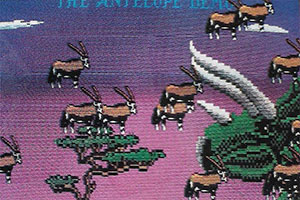 Atari reasoned that rather than compete directly with the Super Famicom it would leap-frog it with a new machine, technically far superior - the Jaguar, due in 1992.
Atari reasoned that rather than compete directly with the Super Famicom it would leap-frog it with a new machine, technically far superior - the Jaguar, due in 1992.
The Panther console is a good marker as to how the next machine will compare with the Super Famicom. Indeed Atari is confident enough to allow a review of the dropped machine to show just how powerful it is and consequently to raise expectations for the arrival of the new one.
The Panther development machine that was sent out to developers has a discreet black, oblong metal casing. It measures approximately 15 inches long by 12 deep by 5 inches high. The front has an Atari logo/motif and features a reset button, headphone socket and volume control.
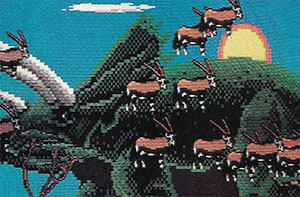 To the rear of the unit there are audio outputs, video output, joystick ports and a parallel port for downloading data. I was shown a series of demos produced by Jeff Minter and a partially written game.
To the rear of the unit there are audio outputs, video output, joystick ports and a parallel port for downloading data. I was shown a series of demos produced by Jeff Minter and a partially written game.
The demo began with a small Llamasoft logo in the centre of the screen, which slowly expanded to fill up the whole screen with dozens of little llamas bouncing around.
Everything on screen was smooth, even when the logo filled the entire screen. The game was in the Defender mould and what initially surprised was that everything on screen was moving at 50Hz - it was all moving silky smooth and there were 100 plus colours across the playarea. What stood out was the smoothness, the lush colours and the sheer size objects could be stretched to by using the hardware scaling with no loss of speed or fluidity.
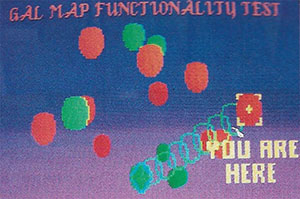 The Panther has a Motorola 68000 running at 16MHz and two customised chips - the Panther and Otis. The Panther chip is an object processor. It works on lists of objects, which can be in many forms, like literal sprite data and compressed sprite data called RLE. It can also do memory to memory transfers, change on-screen colours and manipulate graphic data.
The Panther has a Motorola 68000 running at 16MHz and two customised chips - the Panther and Otis. The Panther chip is an object processor. It works on lists of objects, which can be in many forms, like literal sprite data and compressed sprite data called RLE. It can also do memory to memory transfers, change on-screen colours and manipulate graphic data.
The chip can do hardware maths and object manipulation - shifting, skewing and scaling. The screen is 320 pixels wide by anything from 200 to 262 lines vertically, There is a notional figure of 83,840 sprites on screen but of course this is tempered by sprite size and number of colours.
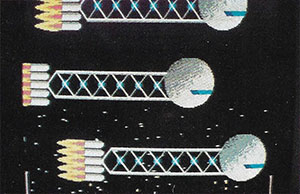 Otis is the dedicated sound chip, made by Ensoniq. This is a very sophisticated chip with digital sampling rates in excess of 20KHz, low and high band filters to zip up the sound and the ability to replay samples at lower rates with Otis filling in the gaps!
Otis is the dedicated sound chip, made by Ensoniq. This is a very sophisticated chip with digital sampling rates in excess of 20KHz, low and high band filters to zip up the sound and the ability to replay samples at lower rates with Otis filling in the gaps!
The bottom line is that the Panther is a tremendously powerful console. Its technical specifications in virtually all areas outperform the Super Famicom.
The Jaguar is said to have a 68030 processor and more sophisticated hardware. With the Panther looking this good, Atari may well have made the right decision.
Text taken from page 2 of “Games-X” Magazine, issue 13, originally published July 1991. This issue is also available online from retrocdn.net (local mirror).
Reproduced here in the name of historical interest and preservation.
“The Extinct Panther”
August 1991 - “The One” Magazine Issue 35
Just after Atari announced the shock decision to kill off its Panther console and just before it finally consigned it to the dustbin (taking out all of the useful bits first of course) the hardware giant invited The One to its Slough offices to see what might have been.

BOUNCING WILDEBEEST? That’s right, Mr. Minter’s affections have obviously moved on a little since his Llama loving days. Apart from pretty animals, this demo shows off the Panther’s sprite handling abilities: no matter how many of these creatures appear on screen, the rate of movement never slows down.
THE WAY THAT NEW computers and consoles are launched usually goes something like this: a few vague details are leaked to the press, which immediately prints all sorts of wild speculation as to the capabilities and price and so on; the next step is to show the machine to certain large developers (usually behind closed doors at one of the big computer shows) and then finally, the sheet is pulled off a shiny new machine at some grand launch. After that, anything can happen… Sometimes the machine doesn’t appear for months (or even years), other times it does appear, but looks completely different to the machine that was proudly unveiled - and occasionally it never appears at all (who remembers the Konix Multi System?).
Atari’s Panther console seems to have fallen into the last category. It was whispered about for months, until Atari finally made its announcement that, yes, it had developed a fully working 16-bit console and, no, it would never release it to the general public. Of course, this started the rumour machine all over again; people speculated that either the Panther had run into such terrible problems during production that Atari decided to cut its losses, or that the spread of the Sega Genesis (a.k.a. MegaDrive) and Nintendo Super FamiCom prompted Atari to give up the race before it had even started.
Atari, on the other hand, claimed that the only reason that it was dropping the Panther was that it had something even flashier up its sleeve - enter the Jaguar, an all-new 32-bit console which the firm is convinced will be way ahead of the game when it appears next year. But what of the original machine - did it really exist? Atari said yes… and to prove it, it invited us down to Slough to look inside the little black box which it claimed housed the circuit boards which would one day have become the Panther.

The heart of this machine is a three-chip set-up, consisting of a Motorola 68000 (running at 16Mhz, that’s roughly twice as fast as your computer!), an object processor (nicknamed the Panther) and an Ensoniq sound processor (called Otis). The cleverest of these three - and the one that gives the machine most of its special abilities - is the Panther chip itself. This little baby is responsible for handling all of the graphics operations, leaving the main processor free to do other, more time intensive work.
At the simplest level, the Panther chip works like a sprite generator, taking sprite data from memory and writing it to the screen, but it’s also capable of doing quite a bit more. For instance, it can perform fast memory-to-memory transfers (like a blitter chip in an Amiga or an Atari STE), which makes it capable of copying whole screens almost instantaneously. Sprites and background graphics can be scaled up or down, flipped, rotated, or even skewed at ease. Although the display memory can only accommodate a palette of 32 colours, the Panther is able to switch in different palettes while the screen is being updated (each time a single line is scanned in fact), so a finished screen could boast anything up to 8,384 colours from a staggering range of 262,144!
And if you think that’s clever, then get this - the hardware can simultaneously handle up to 83,840 sprites of any size… without slowing down! What about 3D then? No problem, the Panther has a sophisticated hardware maths capability that allows it to have a really good chew on those horrendous 3D object calculations, once again without any noticeable loss of speed. Soundwise, Atari’s Panther drowns out everything currently on the shelves, thanks to Otis, the sound processor. This little chap is the sort of beast you can expect to find in very flash and very expensive sampling keyboards. It boasts 32 voices (in stereo of course), each of which can be filtered and shifted with frequency interpolation. In plain English that means you can get some weird stuff out of this thing.
Each voice also has a looping capability, allowing samples to be played repeatedly, or even backwards, and each voice has its volume and stereo panning controlled through software. The Panther has an internal memory of 32K, which is more than ample for use as a temporary workspace and would have allowed games developers to achieve more sophisticated effects than is possible with most other consoles because of their restricted variable space. The maximum cartridge size is 16Mb, so we are looking at the possibility of some huge games here.
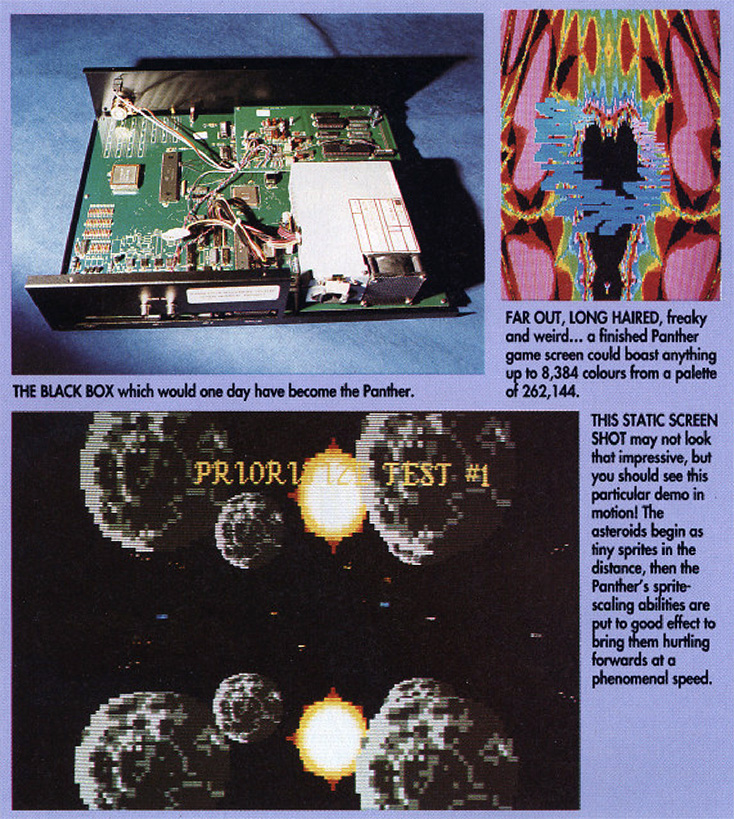
As if all that wasn’t enough to get the mouth watering, the Panther was destined to have four digital joystick ports, two analogue joystick ports (for realistic flight simulation controls for instance), and two light-gun ports. But it’s all very well looking at a black box full of circuit boards… the proof of this silicon pudding was always going to be in the eating - what we really needed was to see something on screen to show that these chips were capable of doing all of the things which Atari promised.
To this end, Atari called upon its old friend, champion programmer and games guru Jeff Minter, to put together a series of short demos to illustrate each of the machine’s particular good points. This, some may think, is something of a strange decision… to ask a games creator who many regard as a ‘yesterday’s man’ in programming terms to fiddle about with the insides of tomorrow’s technology. On reflection, however, it doesn’t really seem to be that far from the mark - Minter is well known as an all-rounder (taking care of all of his own coding, graphics and sound) and also a man who’s genuinely excited by technology.
This last point, it seems, was the most relevant, as the hairy one rolled up his tie-dyed sleeves and had plenty of stuff moving about his favourite monitor in time for the big show. The most immediately noticeable aspect of all of these demos was the amount happening on screen at any one time: whether there were herds of Wildebeest sweeping majestically along the plains in front of enormous static dinosaurs (I kid you not!) or swirls of psychedelic colours moving lazily to and fro, there was never anything that could be remotely described as a dull moment.
Apart from the sheer volume of graphics and sound that this machine can handle, one of the more impressive features thrown up by these little Minter-pieces was the machine’s sprite-scaling abilities. We’re all familiar with the sight of a small on-screen object increasing in size as it apparently moves towards the front of the screen (an art pioneered by Sega coin-ops such as Space Harrier and OutRun) and this isn’t the only console capable of pulling off this little trick - it is, however, the only machine I’ve seen which can do the same trick in reverse: a sprite can be defined to any size (filling the screen if necessary) and then reduced, by hardware, until it disappears into a dot on the horizon… very clever indeed!
Ultimately though, these are only tools of the trade for a good games designer - and as just about everybody knows, it’s software that sells hardware. Atari is as aware as anyone of this point and had already sent development machines to a number of publishers (anywhere between six and 13, depending on who’s telling the story). Psygnosis, apparently, was ahead of the pack with its conversion of Shadow Of The Beast when work on the Panther was stopped, while Domark was believed to have been up to its ears in Pit Fighter.
Work on these projects stopped immediately when Atari pulled the plug and it’s now absolutely certain that this machine will never appear in this form. This is a genuine pity, as it had a great deal to offer in terms of hardware - and if games designers had been given a chance to pick up on this it could have resulted in some absolutely cracking software.
As it stands, we’ll have to hope that Atari keeps its word and that its Jaguar will be getting its claws into us before too long.
Text and images taken from pages 42-43 of “The One” magazine, issue 35, originally published August 1991. This issue is available online from Archive.org (local mirror).
Reproduced here in the name of historical interest and preservation.
Excerpt From “Cutting Edge - The Jaguar Rules Atari’s Jungle”
January 1992 - “GamePro” Magazine Issue 30
Hardware and CD games are razor sharp on the Cutting Edge. Check out these two reports - and dream - The Whizz
The Jaguar Rules Atari’s Jungle
By Slasher Quan
The latest and greatest in cutting-edge gaming isn’t popping up only in Japan. U.S.-based Atari Corporation will try to beat Nintendo, Sega, and NEC to the 32-bit (and possibly even 64-bit) punch with its supercharged game system - the Jaguar.
Atari Has a New Dream
Remember the Panther, Atari’s semi-secret 16/32-bit system which never made it to store shelves? We sure do. It was rumored to have graphic capabilities somewhat better than the Genesis and the Super Nintendo. But as Bob Schuricht, National Sales Director of Atari, states, “Atari backed away from the Panther because the Jaguar’s development was far ahead of schedule.” Atari decided to design a more “unique” console. Heads up NEO-GEO, here comes the Jaguar!
[The article goes on to discuss the upcoming Atari Jaguar and Sega CD]
Text from page 16 of “GamePro” magazine, issue 30, originally published January 1992. Scan of this page is available online from this forum post on AtariAge by Parallax Scroll (local mirror).
Reproduced here in the name of historical interest and preservation.
Excerpt From Interview - Jeff Minter - Llamasoft
February 2003 - “Edge” Magazine Issue 120
What was your involvement with Atari’s Panther?
I got involved fairly early on at the time when beta hardware was first available to developers. Panther was quite a nice machine, definitely superior to the Mega Drive that was current at the time, and better in some respects than the SNES, too. It was a pretty nice sprite-based system - you could manipulate the sprites on the fly for some interesting effects, and it had a nice Ensoniq sound chip, better than anything else out there on a console at the time.
I was intending to do a space game with some Star Raider-y aspects - galactic maps, space shootouts - and some scrolly shooty sections when you went down to planets. There was going to be some strategic aspect in there too, influenced by lain M Banks’ ‘Culture’ novels, which I was quite heavily into at the time.
I coded up various demos on the Panther - sprite warping, scrolly planet stuff (one of them had masses of leaping antelopes in it, if I remember correctly) and such, but before anything really started to come together into a game the plug got pulled on Panther because Jaguar was coming along very nicely and looked set to give Atari a system way more technically advanced than the SNES or Mega Drive with a good few months to get established before Sony would be ready with the PlayStation.
This proved to be the case, but unfortunately there wasn’t really enough good software available for the Jag during that period, and we all know what happened after that.
Text from page 48 of “Edge” magazine, issue 120, originally published February 2003. Scan of this page is available online from this AtariAge forum post by Lostdragon (local mirror).
Reproduced here in the name of historical interest and preservation.
Excerpt From Interview - Peter Johnson - Ocean Software
May 4th 2011 - Codetapper
After your break to pursue music, what made you return to writing games for the Amiga?
It’s something I’ve always loved and, though I got a good number of commissions for the music side and it paid very well when you got the work, there was also a certain amount of sitting around between jobs, so I got back into it when Andrew Bond asked me to help out with some graphics for “Shadow Of The Beast” on the Atari Panther (the hardware never got released in the end, they jumped straight to the Jaguar. I got a thanks on the Lynx version he did). From there I just sort of moved back into programming again.
I do have one more story that overlaps with this one. Before this, when I started doing music professionally, CD drives were just starting to come in for the Amiga so I did a new, synthesiser-based, version of a track or two from “Shadow of the Beast” in my studio and sent it off to Psygnosis in Liverpool. They said that they weren’t interested as they intended to use the CD for faster loading and larger games, and that the chip music on Amiga was fine for their purposes.
Text from 2011 interview with Codetapper
Reproduced here in the name of historical interest and preservation.
Jim Gregory Interview
2016 - Ross Sillifant / ataricompendium.com
It is with the utmost pleasure that I’ve been able to put a few questions to Jim Gregory of Hand Made Software - someone who really needs no introduction if you were ever an Atari Lynx owner. I wanted to know if claims I’d read in an old issue of HMS about them having done development work on the ill-fated Atari Panther console were true. I cannot thank Jim enough for his time, let alone these wonderful insights. His kindness in sharing these with us is just amazing.
Q: Hello Jim, thanks for confirming/talking us through the claim that Hand Made Software were at one point working on Atari’s Panther hardware. Do you recall what game(s) were being worked on and how far along they got?
Jim Gregory: Yes, we had one of the first dev versions in the world. It was just in a tin box and was not in any way a finished beast. To keep it cool, we had to squirt freezer spray through a little hole in the side every 15 minutes.
Q: How did you come to receive the Panther dev kit?
Jim Gregory: We had a good relationship with Atari and were working on the the Lynx for them. They offered it to us and we agreed to give them some feedback on it. We actually had a version of the famous Elite game (which we had done for British Telecom) working on it within a week or so.
Unfortunately we found a BIG bug in the core chip. In those days there were no FPGA-type chips and so the main chip was a committed block of silicon. That meant that Atari had paid a big chunk of money to make the die and were ready to ramp up production. If I remember correctly, it would totally freeze without any way to recover except with a full power cycle. The bug was related to divide-by-zero problems. It was not possible to ‘just avoid dividing by zero’ to make it usable. We sent them a chunk of code that would easily recreate the issue to show the problem. When we reported the issue we were first met with disbelief and then annoyance as if WE had caused it to fail. I believe that at least one other developer later reported the bug and then the whole Panther project was doomed.
Q: At what point were you made aware Panther was canned, and did Atari want you to move all your work onto the Jaguar instead?
Jim Gregory: Whilst I was visiting them in the U.S., I learned that they had decided to bring forward the next console project, which was eventually to be called Jaguar. This cost them a LOT of money and credibility with their owner, Time Warner (who later shut the company down suddenly). Most importantly, it lost them time to market, which sort of set the course to eventual failure.
Q: What were your thoughts on the Panther hardware and Atari’s ability to support/market it? Was it really a home version of the Lynx? Having 32K of RAM must of been an issue.
Jim Gregory: No, it was not at all a version of the Lynx. It was a complex, original design that needed a lot of new programming approaches to achieve results. We worked with a UK company to offer them a special dev kit and we offered them a several GREAT new game designs. The dev kit is in my garage somewhere.
Q: Do you have any idea if Atari wanted to swap the sound chip for cheaper version?
Jim Gregory: The sound chip was never an issue and was actually quite powerful. I still have all the documentation.
[The interview goes on to discuss Hand Made Software’s work on the Jaguar and the Lynx and is well worth a read on the link below.]
Text taken from ataricompendium.com interview which now, sadly, seems to have been taken offline.
Reproduced here in the name of historical interest and preservation.
Guido Henkel’s LOST Atari Panther RPG: The Crypt (Lost Dragon Interview)
July 11th 2016 - Clint Thompson / Lost Dragon, atari.io
The following interview was conducted nearly 18 months ago and was originally planned to be an exclusive for the planned GTW Atari Panther article i was researching, on behalf of the site, however, since said article would not be started by GTW until 2017 at the earliest, I’ve decided we’ve sat on the information long enough and it needs to be put up on Atari I.O forum instead, so the community can enjoy it.
It is with the greatest of pleasure I was able to put questions to a previously unknown, by myself, Atari Panther developer, Mr Guido Henkel:
Q1) Guido, would you mind starting this interview by talking us through just how you became involved with Atari, in terms of developing for the Panther Console (claims go Atari UK had 20 Panther development kits and invited the UK Press and development community to look at the hardware,with the li likes of The One, Games X etc seeing them.
Development kits were believed to of been in the in hands of Jeff Minter, Domark and Psygnosis. They’d approached Mev Dinc, but he’d declined, due to Atari’s poor standing in the industry).
What can you tell us?
A1) My business partner, Hans-Jürgen Brändle, and I were huge Atari ST fans at the time and it was our main development platform. In 1990, during CES we visited Atari’s exhibitor suite to see what news there was regarding new ST/TT models. By sheer coincidence, we rode the elevator with Atari CEO Jack Tramiel. We introduced ourselves and when we left the elevator, Jack instantly put us in touch with one of his developer relations people. It turned out there was no news regarding the ST/TT line of computers, but he told us they were working on a new console, called Panther.
Atari was in the process of signing up developers for the console at the time and we had just completed an action adventure, which we had originally planned for the ill-fated Konix System also, and were working on “Spirit of Adventure” our first full-blown role-playing game. Atari wanted variety in its launch titles and was very interested in getting an RPG on the console, so they added us to their developer program. We never dealt with Atari UK. All of our contact was directly with their US division out of Sunnyvale. A couple of months later we received a shipment from them with a Panther development kit, consisting of a Panther prototype, an Atari TT workstation and the developer manual.
Q2) This is fantastic news, no-one I’m aware of UK Press wise or seemingly online, seemed aware you were developing an RPG, it’s never been mentioned, just the usual suspects, Pitfighter (which it now appears was a red herring), possibly Raiden, Plasma Pong, Crescent Galaxy and Cybermorph.
I’d love to hear more on just what your RPG game was going to be like, just how far along it got before Atari pulled the plug on the Panther, what features were you planning to exploit, hardware wise and your thoughts on the hardware itself …..(there’s been views expressed online over the years people though it seemed to think it lacked enough RAM, Atari were considering dropping the Ensoniq Sound chip etc, so any insights would be fantastic) and is there a possible code/concept art, anything…. still exists of the game itself?
A2) The game we were working on was called “The Crypt.” It was a first-person dungeon crawler in the vein of “Eye of the Beholder,” with an Egyptian theme throughout. You were essentially exploring the insides of a pyramid with all its traps and labyrinthian mazes. I was designing and programming the game at the time and I had one artist working with me on the game’s prototype. We had one level complete when we received word from Atari that the Panther was cancelled and that they had a bleeding-edge 64-bit console called Jaguar in the making that would replace the project.
I honestly do not recall a whole lot about the system. RAM may have been an issue, but we had just written one of the most incredible data compressors in our careers, so that I was confident we would not run into too many problems there.
I loved that fact that I could work on a TT as the master workstation because it allowed me to instantly use the same toolchain I was using for my previous development and did not have to find and learn new tools. So, from the first day, I was essentially ready to work on the console, and I remember how cool it felt to see my first sprite on the Panther screen—it was the game’s logo, and with its hardware sprite zooming capabilities, it was really cool to see how just a few lines of code created a powerful entrance for that logo on the screen.
Regarding our development, I do not believe anything has survived. I may have the actual hardware in the attic somewhere still, but I no longer have documentation or source code of the game itself. I’ve never been one to archive much of my work, which is bad, in retrospect, but I never really thought any of my work was all that relevant to be saved for posterity.
Q3) That’s a crying shame, but understandable, so much has been lost over the years.
How did you feel i wonder, when Atari (Uk ?) announced Panther was being scrapped in favour of the Jaguar-I ask this as ‘officially’ Atari’s PR were sending out the message they fully supported any Panther developers to move code/projects onto Jaguar instead (and indeed we saw Cybermorph and Crescent Galaxy jump ship), but Jeff Minter for example ditched the Star Raiders-esq game he was working on to start Tempest 2000 from scratch for the Jaguar, so we’d love to hear why your RPG never made it across either.
A3) Indeed, Atari offered to enroll us into the Jaguar developer program, and they were true to their word. By the time the Jaguar project opened up for developers, they reached out to us and invited us to continue our work on the new console. However, by that time we were completely tied up developing the first of our “Realms of Arkania” games, which left absolutely no resources available for any other developments, so we passed.
“Realms of Arkania” was not only a dream project for us, but it was also a huge undertaking for a small developer like ourselves.
Q4) Also could i ask you for your, your own personal thoughts on how you felt regarding the possibility the Panther could have made an impact against the likes of the Mega Drive and SNES and thus as some withing the Atari Community have felt, bought Atari enough time to firm up support and hardware (bug testing chipsets etc) for the Jaguar?
A4) From a technical standpoint Panther did put Mega Drive and SNES to shame, I remember. They were getting a bit long in the tooth already, especially compared to some of the things you started seeing on the Amiga. The Panther was like an Atari ST on steroids with a console design, meaning without the operating system overhead. Even though the architecture was very different than that of the ST-line of computers, it was following the same lean and mean approach. The architecture had quite a bit in common with Atari’s Lynx, if I recall correctly, and had some powerful incredibly sprite hardware that exceeded Sega’s and Nintendo’s capabilities.
However, with the Jaguar’s accelerated development schedule, I think they were smart to cancel Panther and shift focus to Jaguar instead. There, they had the 64-bit selling point, and for a while they really had the superior hardware to anyone else. The reason Jaguar failed was not the hardware, it was the marketing and the lack of developer support.
If you look at what was going on at that time, Atari was not really a leading edge game platform in many countries from a developer’s standpoint. In the UK, where most of the top-tier action games of the era came from, everyone was Amiga fanatic, and in the US, where the more heavy-weight games came from, the PC was really beginning to make an impact with its stunning VGA graphics. So, Atari had a bit of a problem getting the foot in the door with developers, which I always found disappointing.
I’d like to thank Guido for taking the time to talk us through what turned out to be a lost game on 2, ill fated consoles and give us his personal views and insights.
They are very much appreciated.
Text taken from atari.io forum post by Clint Thompson.
Reproduced here in the name of historical interest and preservation.
Excerpt From Interview - Martin Brennan - Flare
October 25th, 2017 - Slipstream / konixmultisystem.co.uk
Slipstream
So where did the Atari Panther fit into the great scheme of things?
Martin Brennan
Throughout that period we did consultancy work - we did work for Amstrad (we designed a fax machine for them and a hard disk controller). At one point one of the guys from Sinclair joined Atari. He had worked for Perihelion - Richard Miller. He became a director of Atari in Sunnyvale and he had a project called Panther - It wasn’t called Panther when I joined. Panther was the name of the car my wife had just bought, a Panther Kallista and the chip had no name and I wanted to give it a handle - so it was called Panther.
The design and specification had already been started, and they said “somebody’s left - here’s the concept” and it was only the video part of the chip - there was no sound.
It was a novel video architecture that allowed you to create windows of different sizes and different bit depths. Essentially you didn’t have a frame store - it was a composite of frame stores - a kind of smart video frame store. It would have allowed a great deal of sprite style animation. Sprites in general in those days would have been of a fixed size e.g. 16x16. The games looked ‘spritey’ because of that, this would have been quite an interesting departure. I wasn’t keen on it, but I designed it and the chip was built.
But while I was over in California in ‘89, I actually convinced the bosses at Atari that 3D was the way to go, with the experience we’d gained on Flare one - if you didn’t just do flat rendering, but shaded rendering you got a 3D appearance.
At the time, I was seeing pictures in magazines where computers were rendering photo realistic 3D wire meshes and I said “these are static images, but they only contain a very few number of polygons - we could take that, animate it and you could produce a game that was a quantum leap away from the current games”.
So the Jaguar project was born from the Panther project.
In essence Atari looked at the Panther and looked at what we were promising for the [Jaguar] project and said can the Panther project.
[This long and detailed interview talks about Brennan’s involvement with the development of the Konix Multisystem and is well worth a read!]
Text taken from konixmultisystem.co.uk interview with Martin Brennan.
Reproduced here in the name of historical interest and preservation.
Quote From Rob Nicholson, Software Development Manager, Hand Made Software
July 24th, 2018
The display was built up from a display list of bit-maps (or sprites). Each entry in the bit-map said “Display the bit-map at x,y”. On each scan line, the object processor scanned through the list and determined which bit-maps were visible on the current line. It then filled a single line video “buffer” which was then output to the video hardware on the next scan line. It alternated between two scan line buffers.
The Lynx has a simple 160 x 102 pixel video buffer (4 bits / pixel) so generates the display in a very different manner.
It could also scale and mirror the bit-maps (by reading right to left and bottom to top) but it couldn’t rotate. AFAIK, the bit-maps were in varying bit-resolutions. I can’t remember if the single line buffers were 16 bit per pixel or 8 bit per pixel.
This display list type of system was pioneered in early arcade systems and was used in the Atari VCS and 7600. It has the advantages that you can have a mixture of a standard video buffer (except see below) and “hardware” sprites. The bit-maps could be pretty much any size (aligned to 16 bit boundary I think). The downside of the system was that if you tried to display too much on one scan line, the system went crazy. The screen started jumping all over the place. On the Panther, you soon hit this limit - maybe 4 or 5 16 bit full-width sprites on each line. It was certainly nowhere near 83,000 sprites on a real game.
The Panther had a pathetic amount of RAM. Maybe 128K. Certainly not enough to create two bit-maps as big as the whole screen and implement standard double buffering. I think there was 32K of static RAM for the display list. This was a good idea as it sped up generation of the display. The same system was used on the Jaguar but the object processor was beefed up and made more flexible to handle other features such as read-modify write (for shadows etc). Unfortunately, on the Jaguar the display list was in normal DRAM which meant the whole system stopped when the video processor wanted to access memory. It also meant that on the Jaguar, the advantages of page mode RAM where accessing the next byte/word along was often defeated as different devices (display, blitter, 68k and GPU etc) kept reading from different pages.
The Jaguar was packed full over excellent ideas but the problems were never weeded out. A shame really. As I said, a neat piece of hardware. (except for the CD-ROM…)
Text taken from AtariAge forum post by Lost Dragon.
Reproduced here in the name of historical interest and preservation.
Quote From Jeff Minter, Llamasoft
July 24th, 2018
Hmmm - well I certainly never had it displaying 65,535 sprites simultaneously!
The sprite hardware was a lot like the OLP on the Jag, and had similar limitations - putting too many sprites on one scanline would cause “tearing” where the OLP had insufficient time to traverse the entire list during the time of a scanline. Also, sprites that were scaled up would take twice the bandwidth of standard, unscaled sprites, ISTR.
I did a demo with this whopping great dinosaur about 2 screens high, a couple of ground planes and 40 bouncing, scaling antelopes that bounced along the ground. ISTR that if you had too many beasts land at the one time, you’d get a bit of tear at the bottom of the screen.
You could do some nice warping though by using an IRQ per scanline to twiddle scaled sprite params… had some nice stuff with wibbly, colour-cycling Mandy images that warped and scrolled, ISTR…
\
(:-) - Y a K
/
Text taken from AtariAge forum post by Lost Dragon.
Reproduced here in the name of historical interest and preservation.
More Atari Panther Schematics Discovered
January 30th, 2022 - czietz - atari-forum.com
This post is in a way a continuation of this thread from five years ago. Again, it’s about digital “archaeology”, again it’s about the never released game console Atari Panther.
Recently several copies of the sound daughterboard of the Panther development system have turned up for sale. It is the same daughterboard as the one shown on the known photos of the Panther prototype. Ensoniq’s OTIS is used as sound chip, an IC that was also found in arcade systems at the time.
I was asked (indirectly) by a buyer of the daughterboard if I could dig up information about it. Thus, I started to search for technical data. I was able to find four schematics that show different stages of development of the Panther and are in different file formats. Among them is the schematic from the thread linked above, which probably represents the (never released) production version.
This schematic and another schematic were drawn with Futurenet DASH, which I already know from the Atari ASICs. Two older schematics are made with OrCAD for DOS. I’ll spare you the description of the laborious steps, but eventually I managed to set up a plotting program for OrCAD schematics, which helpfully did output to PostScript. The PostScript it generates is a bit archaic, but with some manual editing of the files I was able to convert the schematics to PDF.
Please find attached (in reverse chronological order):
- The already known schematic from the previous thread, dated April 23, 1991. Thanks to We Love Atari Vol. 2, I now know that the Panther project was officially discontinued on May 16, 1991. So, possibly this is the last schematic created for it. [local mirror]
- An earlier version of the schematic, dated March 5, 1991. There are small differences, especially concerning the connections to the outside world. For example, the final version added an expansion connector and a second headphone output. [local mirror]
- A schematic, called “Panther Dev[elopment] System Schematics”, from January 15, 1991. It is still very different from the above-mentioned designs. [local mirror]
- A schematic of the “Dev[elopment] System - Atari England” from November 17, 1990. A noticeable difference is that obviously a proprietary sound ASIC was originally intended instead of the OTIS. [local mirror]
And here it comes: The drawing from January 15 seems to match the photos of the prototype! In particular, it shows the 50-pin connector that connects to the daughterboard. Unfortunately, I could not find the schematic of the daughterboard itself, but the pinout of the connector is now known. The buyer hopes to be able to bring the board back to life once with this info. And maybe one of you here is interested in these old schematics, too!
Text and files taken from atari-forum post by czietz.
Reproduced here in the name of historical interest and preservation.
Roundup Of Misc. Forum Posts etc.
Dates / Authors: As Credited
Some uncorroborated posts from various well-known and trusted forum users over the years, rounded up and summarised here before they get forever lost to the ether…
[solidcorp (AKA Atari Corp. developer D. Scott Williamson), AtariAge, 2011-11-25]
“I thought it was lame. After working on the Lynx, going back to a display list platform with just a single scan line video buffer more like a 400/800/7800 just seemed like a big mistake.”
[LD, ASSEMBLERGames, 2017-07-29]
“Many like myself, KGRAMR, Shinto etc have contacted Atari Corp and it’s now very much established that despite supposed ‘expert claims’ Cybermorph and Crescent Galaxy were never started on The Panther. Nor were Pitfighter (Domark), The Humans, Raiden or Steel Talons (Imagitec Design).”
[LD, ASSEMBLERGames, 2017-07-29]
“From my email chat with Missile Command (ST) Graphics Artist, Gary Johnson:
“I did work with Rob Zdybel back in the day of the years 86 to 89. But not really on any old Atari Coin-ops to convert. We worked on newer games for the Panther. At this time I don’t remember what they were, because I only did this for a short time till I moved on.
Though back in the years of 81 and 83 I did art of other coin-op games for conversion for the Atari ST. Rob was not one the programmers during that time.
I hope this helps.
Gary””
[Clint Thompson, AtariAge, 2017-09-22]
“There seems to be multiple different stories, some probably created by media outlets at the time. 16-bit system, 32-bit system, 16-bit chip with 32-bit internals. It’s a mess.
Leonard mentioned it had nothing to do with the ST (unless you count the 680000 but that doesn’t really count) and didn’t use the Blossom video chipset. He also mentioned that there were no working Panther chips yet we have at least 7 development kits floating around. Turns out it was a misunderstanding and he said while the development kits work, they don’t work as intended with unstable video and a huge hardware bug, something Minter mentioned as well and having to force reset the hardware. They had hoped one of the developers would find a way around the bug but that never happened.
You’re right though, specs are pretty bad for its time as well. You would’ve been better off with a re-packaged STe as a console in my opinion but knowing Atari, it would have shipped with no RAM.”
[Curt Vendel, AtariAge, 2017-10-04]
“Atari was considering an ST based game system as early as 86’ Atari was also looking at hybrid 7800/XE systems and other idea’s. John Hardie just recently shared a rather eye opening set of documents on a discussed project within Atari using the Panther case for a cost reduced 7800… Despite the public perception that Atari Corp was focusing primarily on computers, they were in fact doing a lot of research into getting a new game console out very early on.”
[Lost Dragon, Atari-Forum, 2018-05-12]
“It was (Ex-Tiertex) Paul Gill that very kindly passed onto GTW the info that Strider II had been Green Lit for the Panther console.”
[The acronym “GTW” refers to Games That Weren’t]
[Lost Dragon, AtariAge, 2018-08-10]
“It appears at least 1 company approached Atari to try and licence the Panther technology after Atari had officially annouced Panther had been killed off in favour of the Jaguar, but details are so thin on the ground.
Company itself wasn’t named, nor their plans for the Panther hardware, only that a similar approach had been made to Konix to use the abandoned Multisystem technology.”
[Lost Dragon, AtariAge, 2018-08-10]
“Bit more from Rob Nicholson of HMS [Hand Made Software]:
We (HMS) worked on the Panther protype. From memory it had a 680x0, maybe a 68010 or 68020 clocked at ~16MHz. It had a display processor similar to the Jaguar object list processor, i.e. no screen. It didn’t have much RAM, i.e. not enough to double buffer the screen. Yes, Jeff did work on it and I think he found a few problems.
We knocked together a few demos but nothing else before the Jaguar came along.
Rob.”
[Yak (AKA Jeff Minter of Llamasoft), AtariAge, 2021-07-31]
“Yeah the antelope demo was something I put together to get a rough idea what I could get out of the OLP, I just chucked in a simple scrolling landscape then as many bouncing antelopes as I could before the OLP started to stress out (you could tell when it was reaching its limit as the ground would start to stretch out downwards when the OLP ran out of time rendering too many sprites on one scanline). IIRC as it was just a demo I actually grabbed most of the graphics for it straight out of deluxe paint (the trees and antelopes were example DPaint brushes as I recall). Llamazap was an entirely different thing (I couldn’t’ve reused much of the code from the antelope demo anyway, as Falcon had no OLP). Pity the Panther went away before I had a chance to do much more with it. I do remember another demo that was going to be like a galactic map for the game, using the sprite scaling to draw planets in a cluster that you could rotate, but that didn’t look anywhere near as nice as the antelope demo.
There was never any actual gameplay in the antelope demo, you couldn’t shoot the antelope or anything, and I only ever called it the antelope demo, never “Antelope Attack”. Maybe someone else who saw the demo called it that - but not me.”
[Yak (AKA Jeff Minter of Llamasoft), AtariAge, 2021-08-02]
“I suppose Llamazap came out at a not too distant time from the Panther stuff, and was a horizontal scroller primarily; perhaps it was easy for someone to infer a connection that wasn’t there, IDK.
I realised talking about all this that I haven’t even seen the antelope demo since the early 90s, no video exists of it (as it does with the early Jag demos I did when I first got invited to Sunnyvale to tinker with the prototype Jag, I was amazed and rather pleased to find those on YT a few years back). I did find a bit about the antelope demo from a magazine, with at least a screenshot. I’d completely forgotten about the giant dinosaurs in the background. Those came straight out of DP too IIRC. It was an amazing novelty to be able to draw them huge like that with the sprite scaling.
Regarding SR, if I were to do a version it’d be in VR. I’ve got an idea of how I’d like to do it, and it’d be a VR thing, and I’d want to keep it really simple and pure like the original, not go off trying to make another Elite Dangerous or aught. Part of the genius of SR was that they managed to cram such depth into such a tiny fragment of code, and make it so that you could pick it up as a beginner really easily but still have to work at it for months to achieve the top rating in Commander Mission. The accessibility, the emergent complexity of the gameplay, from just a smidgeon of 6502 code - such a masterpiece from Neubauer.
I’d love to try my hand at a homage to his work but it’d likely be highly non-commercial, and something maybe only people who knew the original would really “get”. Not that I really care about that, the older I get the less I care about being anywhere near the mainstream, I just want to make the things I want to make, and if I can survive doing that I’m more than happy, I know I’ll never get rich and that’s not my main objective. I have a bunch of VR stuff on the backburner and perhaps I could start to look at some of the SR stuff in that when I get the time to. I’m surer a bunch of the VR-lightsynth stuff I already have working would work beautifully for the hyperjump sequences :D”
[Lostdragon / Leeroy ST, AtariAge, 2021-08-09]
“Leeroy ST: Just out of curiosity what games actually we’re on the panther first then moved. If any?”
Lostdragon: “None that i am aware of.
The Crypt, Guildo H’s RPG started life on the equally ill-fated Konix Multisystem and was moved to Panther but never started again on any other system.
Panther work seemed to consist of conversions, test routines for planned original titles that never got very far and died with the system.”
[Markus-Frank Jünemann - Comment on my YouTube Video]
“Bob Yannes will be proud of you!”
[Bob Yannes designed the SID chip and co-founded Ensoniq. He also designed their 5503 chip - a direct predecessor to the OTIS as used in the Panther and the sound chip used in the Apple IIgs. So seems the Commodore 64, Apple IIgs and Panther all share a common audio heritage!]
[a stinky ox / @llamasoft_ox (AKA Jeff Minter of Llamasoft) / Andraw / @PegasiToons, Twitter, 2022-10-19]
“AnDraw: Hey Rees, I got a few questions about the panther that I wanted to ask you. You see, I’m trying to research more about the console so that I can try to make some Panther-style indie games with accurate graphics and sounds. I’ll put them in the replies below:
AnDraw: First, I know that the OTIS chip from Ensoniq was used in the console, but would music based on the Gravis Ultrasound be accurate enough to the OTIS chip?
AnDraw: Next, can the hardware skew and rotate sprites? I ask this because I plan to try and make a Panther-style game based around the cancelled game Dactyl Joust.
a stinky ox: IIRC there was scaling on the OLP but not rotation.
AnDraw: Interesting! Thanks for the info @llamasoft_ox! Also, I really like how the Tyrannosaurus Rex in the Antelope demo looks like the ones from older movies like King Kong.
a stinky ox: IIRC all the graphics for that demo were just blagged out of the data disks for whatever version of Deluxe Paint was current at the time. 🐱🐉
AnDraw: my god, you’re right:
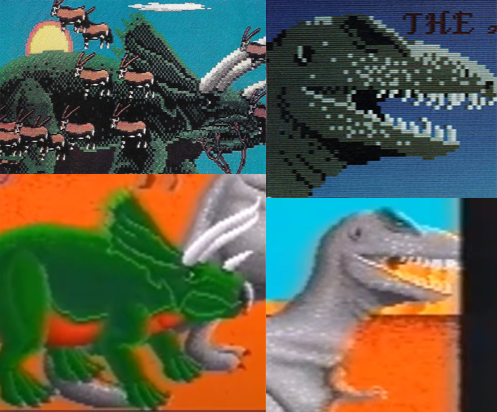
[a stinky ox / @llamasoft_ox (AKA Jeff Minter of Llamasoft) / Rees / @ctrl_alt_rees, Twitter, 2022-10-19]
“a stinky ox: IIRC there was scaling on the OLP but not rotation.
Rees: This sounds about right, I’ve come across a few magazine articles in the course of my research that mention the lack of hardware rotation.
a stinky ox: I’m sure if it could do rotation I’d’ve had it doing so in the antelope demo. One of the first things I did when doing a set of demos for the Jag OLP was have stuff scaling and spinning all over the place.
Leonard Tramiel Facebook Posts
Dates approximate
Many thanks to @welshworrier on Twitter for sending screenshots over to me. (link 1 / link 2).
Leonard, alongside his brother Sam, was involved in the running of Atari under their father Jack Tramiel from 1984 - 1996.
[Leonard Tramiel, Private Facebook Group, 2018] (local mirror)
“The Blossom video card had NOTHING lo do with the Panther. The basic characteristics of the Panther were set before Martin Brennan got involved. In fact, the chip was nearly finished when he was brought onto the project. Also, Martin was brought on as a contractor, not Flare. There was never a plan to produce both the Panther and the Jaguar. Once work started on the Jaguar, the Panther was always thought of as a backup project in case the Jaguar didn’t work.”
[Leonard Tramiel, Private Facebook Group, 2018] (local mirror)
“I never heard of any discussion about the form of cartridge for the Panther. It got canceled before these decisions would be made.”
[Leonard Tramiel, Private Facebook Group, 2018] (local mirror)
“Trevor McFur originated LONG after the Panther was canceled. I have no idea where this particular bit of nonsense came from other than the fact that [it] would have been easy to do on the Panther.”
[Leonard Tramiel, Private Facebook Group, 2018] (local mirror)
“The first run chips didn’t work. If they had, there were development systems at a few developers so they could get started on games.”
“I had nearly finished a piece of software I’m really proud of though essentially no one saw it. It ran on an ST. You would import a bit map for some sprites, place the sprites on the screen, set motion parameters, and press download. The system would generate documented code, assemble it and download it to the Panther. Of course I never got to test it but it was all written before the chips came in.”
[Leonard Tramiel, Private Facebook Group, 2018] (local mirror)
[On the subject of the Panther dev team’s reaction to the project’s cancellation…]
“Everyone (that was still with the company) that worked on the Panther, also worked on the Jaguar.”
[Leonard Tramiel, Private Facebook Group, 2019] (local mirror)
“Flare had nothing to do with the decision to abandon Panther. The system was NOT finished.”
[Leonard Tramiel, Private Facebook Group, 2019] (local mirror)
“The Flare folk certainly gave us their opinion on where both projects were in terms of time and resources needed for completion. That isn’t persuasion. The important thing that was very wrong in your previous statement was the Panther finished(sic). It wasn’t. The graphics chip didn’t work.”
[When he mentions “both projects”, the other project referenced was the Jaguar.]
[Leonard Tramiel, Private Facebook Group, 2019] (local mirror)
“…there is a lot of misinformation out there about Panther. I have no idea why there are people that say they played a game on a Panther. Perhaps it is an example of the Mandela Effect.
In any case, the simple fact is it never worked. Some systems were built, against my suggestion that we wait till we had working chips. Some were shipped to developers awaiting working chips. I even had a trip to Europe planned to meet with the developers and help get them started with the nifty video development environment I had written. The chips can(sic) in and the display showed noisy static.
The problem was traced to a flaw in the heart of the system that would take a lot of time and effort to get working. We looked at it from all angles and decided to scrap the project. No one was more disappointed than I was. No one would get to use my nifty development software.”
[Leonard Tramiel, Private Facebook Group, 2019] (local mirror)
“…the object processor in the Jaguar is based on Panther. The Panther had some extra features but the basic idea is the same.”
Ongoing Personal Email Exchange With Ross Sillifant
Dates as stated
Ross Sillifant is a researcher for the excellent Games That Weren’t website and book and has been personally responsible for digging up much of the first hand information and interviews posted on this page, which were conducted in the course of researching the book. We also have an ongoing personal email exchange as he uncovers information, a lot of it fragmented as it has come from various email exchanges with industry insiders. He has given me permission to post the relevant parts here, and due to the nature of his work I consider him a trustworthy source. Minor formatting tweaks have been made and irrelevant / personal information removed.
Ross Sillifant, Private Email, 2022-03-20
“Lee Actor from Tengen and Richard Brown, Head of Development at Domark were kind enough to confirm Pitfighter on Panther was a myth.”
Ross Sillifant, Private Email, 2022-03-20
“Mev Dinc was a legend, confirmed he passed on the opportunity to develop on the Panther.”
Ross Sillifant, Private Email, 2022-03-20
“Fred Gill and Brian Pollock from ATD were delightful, cleared up urban myth of Cybermorph being on Panther”
Ross Sillifant, Private Email, 2022-03-20
“Joel Sieder who wrote the Panther O/S was fantastic.”
Ross Sillifant, Private Email, 2022-03-20
“We spoke with the following regarding possibility of:
Humans/Dino Dudes
Raiden
Daemonsgate
Ever starting on Panther:
Nigel Kershaw
Julian Holtom
Andrew Seed
Alistair Lindsay
Lee Garnett
Mark Fisher
Sarah Jane Avory
Anthony Rosbottom
Trevor Raynsford.
I think around 15 people, coders, artists, musicians, producers, who worked there and on the games in question, nobody knew of ANY Panther work, period, so at best, they would have been PLANNED titles.”
Ross Sillifant, Private Email, 2022-03-20
“The trouble with trying to include the Panther in the GTW book, was that there simply weren’t enough games far enough along to justify it’s inclusion, nobody had revovered anything on anything of the dev kits now in private hands, no WIP Shadow Of The Beast, Guildo had nothing, no art, no video footage etc for The Crypt, Scott D Williamson didn’t have his graphics demo, there simply wasn’t anything new to share.”
Ross Sillifant, Private Email, 2022-03-20
“HMS [Hand Made Software] had simply run their ST conversion of Elite to test the dev kit with.”
Ross Sillifant, Private Email, 2022-03-20
“Magazines simply ASSUMED that because TENGEN had put out Pitfighter on the ST, MD etc, it would be a no brainer for it to appear on the Panther, but both Lee Actor (TENGEN) and Richard Brown (Domark) were crystal clear this was never to be the case.”
Ross Sillifant, Private Email, 2022-03-20
“I even found and shared the advert for Amiga Raiden, no such art let alone code has ever been found for any Panther version, nobody involved in coding any version of Daemonsgate, Raiden or Dinodudes, knew of any plans to convert them to Panther, If Hooley had planned them, he certainly hadn’t assigned any staff to them.”
Ross Sillifant, Private Email, 2022-03-20
“The only press release from the Tramiel family regarding Steel Talons, was that it was originally to be an STE title, designed to showcase the hardware, I’m not even sure if work ever started on that, it just appeared on LYNX and FALCON.”
Ross Sillifant, Private Email, 2022-03-20
Frank Gasking had proven Tiertex had greenlit a Panther version of the awful Strider II … Frank had spoken with multiple Tiertex sources, including coder and artist, he does painstaking research.
Ross Sillifant, Private Email, 2022-03-20
Joel Seider, Atari Corp [Via Email]:
“Unfortunately, that was a very long time ago so I don’t have a lot of clear memories about the Panther. I believe it was developed by a group in England. I worked out of Atari’s Lombard office (a suburb of Chicago) and we received an early prototype of the hardware. Our role was to give some feedback on the hardware and the development environment. If memory serves, the development environment would have been on the Atari ST using the GNU compiler. Again, that was a long time ago so I may have those details wrong.
I recall the hardware capability being average, but probably not anywhere near good enough to make a splash. The Super Famicom had already been released in Asia and my recollection was that the Panther hardware was really not that much better. At the time, there were also a lot of rumors of 3D hardware coming out in a few years from a number of different companies (including Atari).”
Ross Sillifant, Private Email, 2022-03-20
Quote from: Chris DeSalvo 10/2/93
“I work at Interplay productions, you (hopefully) are probably familiar with some of our games. Anyway, Bill Rehbock, Director of Applications Software at Atari came by today and demoed a FINAL PRODUCTION MODEL of the Jaguar for us, trying to get us to sign on as a developer. Here is everything I can tell you about the Lynx and Jaguar that was discussed in that meeting.
Lynx Update:
Don’t give up on the Lynx. Expect it to magically reappear on store shelves starting with the holiday season. Even Toys ‘R Us will carry the Lynx again!
Here’s what happened… Atari had geared all its marketing resources and development bucks on the Panther a few years ago, and were hoping for a big Panther/Lynx debut. Well, the Panther died. So, the Lynx got shoved out in the cold cruel world by itself.
Ross Sillifant, Private Email, 2022-03-22
Lee Garnett:
Daemonsgate was entirely written in assembler (IIRC) so it wouldn’t have been trivial task to port it to other platforms.
Lee.
Ross Sillifant, Private Email, 2022-03-23
Alistair Lindsay, Imagitec Design [Via Email]:
I was involved with the game Freelancer at an early stage, creating music, however this was still ongoing when I left Imagitec so don’t know if this ever saw the light of day. I know it didn’t on the Jaguar CD, but PC could have happened at some point. I wasn’t involved with Space Junk, this was just before I started at Imagitec and it wasn’t in development while I was there. It must have been canned, however I do remember all the latex masks that were created for it, these were still in the office.
I don’t remember any work on the Atari Panther, during my time at Imagitec. When I started it was all Jaguar, PC, SNES and Megadrive.”
Ross Sillifant, Private Email, 2022-03-23
Sarah Jane Avory, Imagitec Design [Via Email]:
“When working for Imagitec, I was working on an Atari Lynx version of Viking Child, but I left before the game was completed to get a job at Core Design. Never saw Atari Panther.”
Ross Sillifant, Private Email, 2022-03-23
[Anonymised Email From Ex-Imagitec Employee 1]
Q) Would it be fair to describe Martin Hooley as something of a showman? Great at his job of P. R, getting a lot of coverage in the games press for Imagitec titles, but often using fake screens and did that create serious issues for yourselves?
A) You’ve pretty much hit the nail on the head about Martin and his business accument. Conversions, remakes, etc. were where Imagitec shone, but the number of failed original titles we worked on was pretty crazy. In my opinion the work we did for Atari and the Jaguar are what the company is best known for.
Source then shown the RG Article where Martin Hooley claims Raiden, Dino Dudes and Daemonsgate were in production for the Panther.
Response: I can see why this is frustrating and I wouldn’t want to badmouth Martin as he gave me a job in the industry, but he was certainly a character or even a ‘cowboy’ in the best possible sense. He’s either bullshitting still to this day or just plain can’t remember anything.
Ross Sillifant, Private Email, 2022-03-23
[Anonymised Email From Ex-Imagitec Employee 2]
Imagitec often had games “using as yet unseen technological advancements” in development, it sounded good and helped Martin Hooley, the studio owner, raise funding to keep the studio going. In truth, I have no idea if any of these titles were ever really meant to be completed.
Panther Prototype Dev Console Pictures
Some photos and other pictures from around the web, this section probably needs organising better…
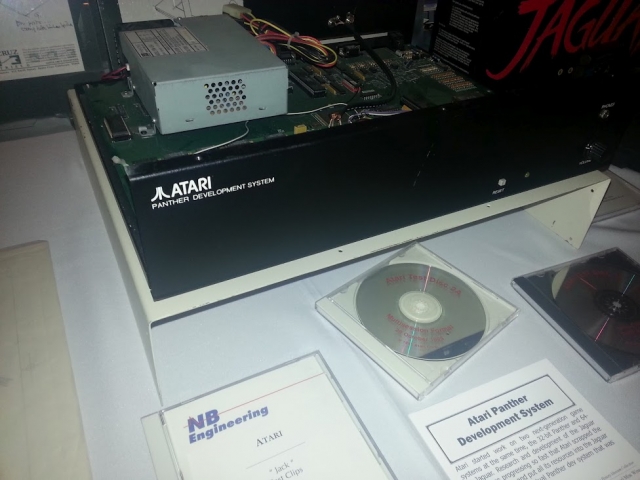
Panther Prototype / Dev Unit Front View (Open) [Source]
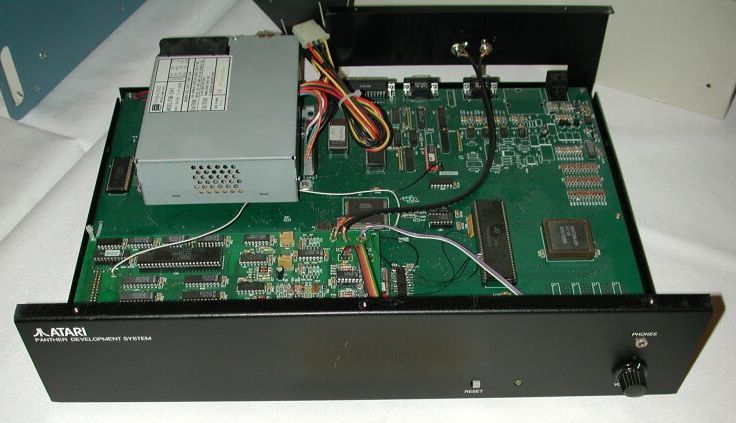
Panther Prototype / Dev Unit Top View (Open) [Source]
Images From Homecomputer.de
The page that these images were taken from has since been taken offline but is available via the Wayback Machine.
Information on how this unit was obtained (taken from the link above):
“First of all here is the story of this particular machine as far as it is known:
The Panther with prototype number PDS0009 was sold within the liquidations items of “Atari Benelux” at the Hobbytronic (an electronic fair) in Dortmund, NRW, Germany - nobody seems to recall the exact date of this particular fair but I will find out asap. The Panther was sold along with other (now) quite rare Atari items like ATW800s, dozends of Atari Stacy and presumably some more very intersting stuff. Christoph Wissing was smart enough (unlike me - I was also at this fair) to buy the machine for 30 DM ($15) to see if he can get it to work. Due to the complete lack of documentation and software he did not succed and put the pather away for some years.
A few weeks ago Henning Schreiber a good friend of mine who has to endure my HomeComputer-Mania for some years now mentioned my “special interests” (he always calls it “collecting scrap”) to one of his colleague at webtop media - this guy turns ot to be - surprise, surprise - Christoph Wissing. As Henning knew that my crucial 30. birthday was soon to come he decided that the Atari Panther Prototype would be the ideal birthday present and so this machine got part of the HomeComputer-Museum.”

Panther Prototype / Dev Unit Front - Closed

Panther Prototype / Dev Unit Back - Closed

Panther Prototype / Dev Unit Back Detail / Serial Number
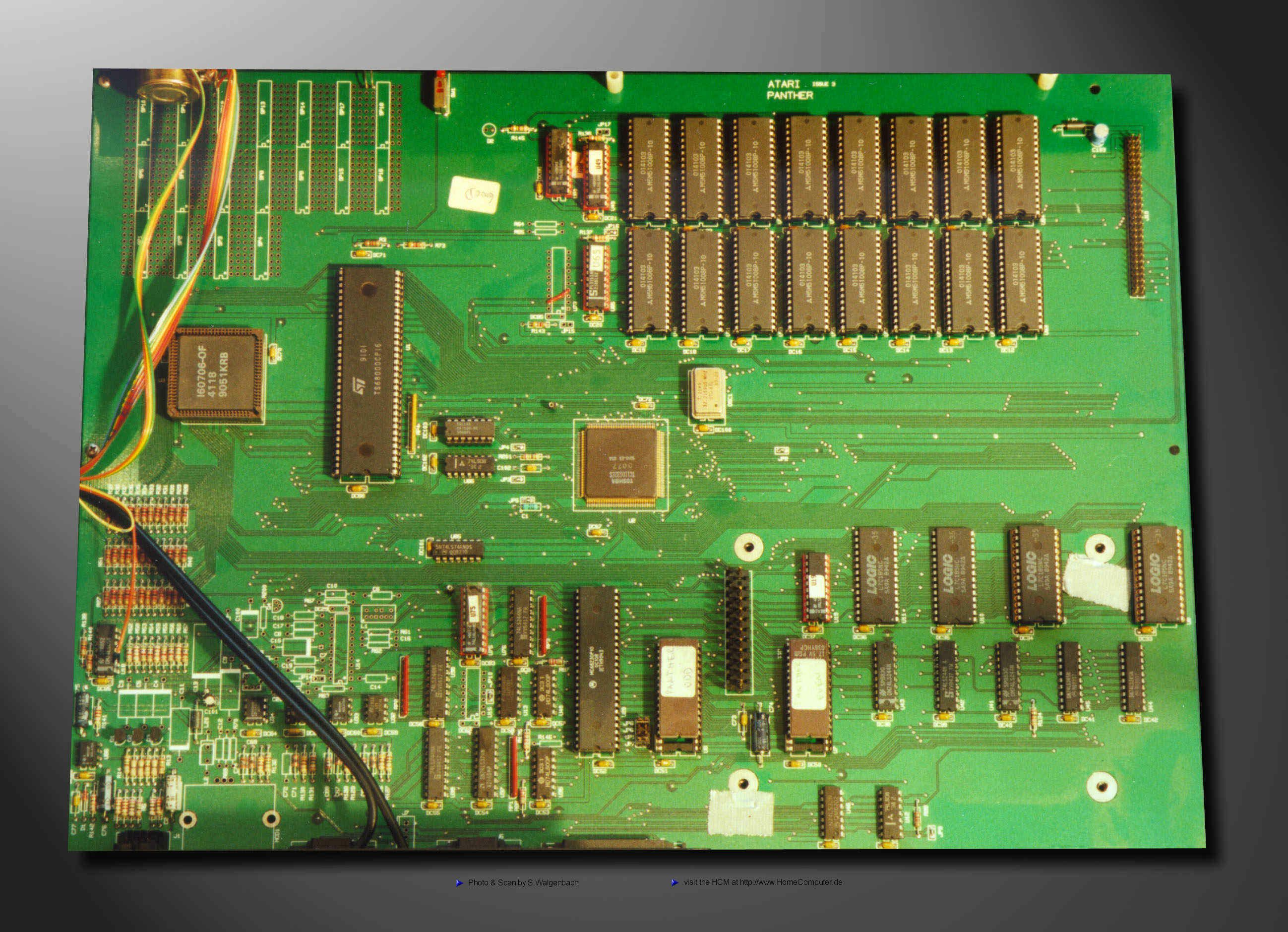
Panther Prototype / Dev Unit Motherboard Detail
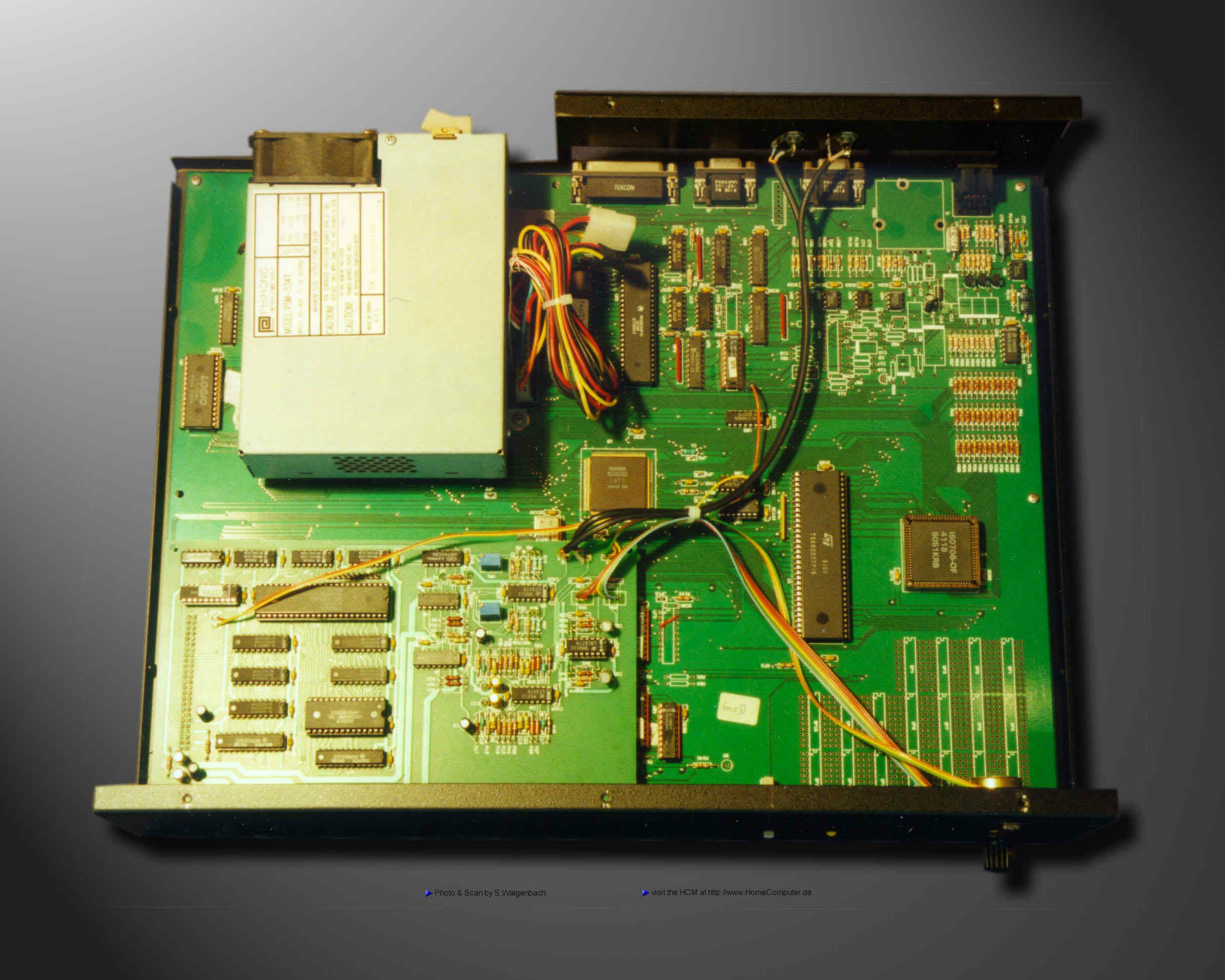
Panther Prototype / Dev Unit Top - Open
[It would appear from this photo that the dev consoles used a Phihong PSM-5341 PSU. This makes sense as it’s the same PSU used in the Atari TT030 and Mega STE.]
Many thanks to Stefan for sharing these pictures online, please go and support his great work at the Home Computer Museum!
Even More Further Reading on the Atari Panther
- Archived atarimuseum.com Panther page which gives an excellent overview.
- The Homepage of Valentino Miazzo has some excellent technical analysis of the Panther
- There is an archived copy of an old page from homecomputer.de here, this was originally published in 1998 and contains more pictures and info about the Panther prototype.
- The Atari Panther Wikipedia Page is considered to be full of misinformation and not recommended as a starting point for research…
If you liked this post please consider following me on Instagram or BlueSky!
« Previous: Behind The Scenes With Neil From RMC - Atari Show & Tell!
» Next: The Panther's Roar - Checking Out An Atari Panther Prototype OTIS Sound Module
Published on 08 Feb 2022 • Post content: CC BY-SA 2.0 UK unless otherwise specified • Get in touch!

